Gold's 40 Minutes Non-Stop 11am - 1pm

Now Playing
I'd Do Anything For Love Meat Loaf Download 'I'd Do Anything For Love' on iTunes
30 massive artists who DIDN'T play Live Aid and why: Michael Jackson, Stevie Wonder, Rod Stewart and more
20 January 2022, 10:31 | Updated: 15 January 2024, 11:26

Queen and Adam Lambert re-enact Band's iconic Live Aid set at Austraila Wildfire Concert
By Mayer Nissim

Why weren't Bruce Springsteen, Michael Jackson, Prince and Stevie Wonder at Live Aid?
Listen to this article
Live Aid was a game-changer in pop history.
That's not just because of its sheer scale – an estimated 1.9 billion people across 150 countries watched the broadcast.
- Did you know Noel Edmonds flew Phil Collins in his helicopter for Live Aid?
- Queen's Brian May is calling for another Live Aid to tackle climate change
Even more impressive was the sight of so many massive artists putting aside their even more massive egos to share a stage for a good cause.
The running order for the shows at Wembley Stadium in London and John F Kennedy Stadium in Philadelphia are a who's who of the greatest rock and pop stars of the moment.
David Bowie , Queen , The Who , Elton John , Paul McCartney , Sting, Mick Jagger , CSN(Y) , The Beach Boys , Madonna, Bryan Ferry, U2, Black Sabbath, Run DMC, Duran Duran, and Phil Collins even played both venues.

Queen - We Are The Champions (Live Aid 1985)
But looking at the list of artists, there are some pretty significant names that are missing. Classic rock acts that were still performing at the time, or 1980s stars you'd have imagined would have been there.
So why weren't they? Well, some were busy, some pulled out for various reasons – and some just weren't asked.
We've rounded up the biggest missing names and done some digging on why they weren't at either Philly or Wembley on July 13, 1985.
George Harrison and Ringo Starr (and Julian Lennon)
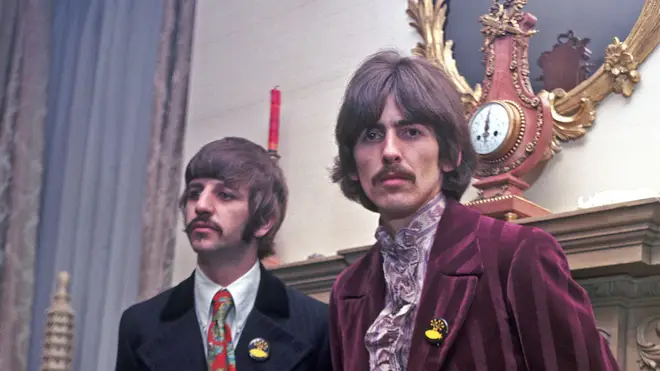
Paul McCartney's set was a major highlight, but George Harrison (whose Concert for Bangla Desh surely set the template for Live Aid) and Ringo Starr weren't there.
Word is they were worried about being tricked into a " Beatles reunion", either as a threesome or with John Lennon 's son Julian filling in for his late father.
Some reports claim that Paul, Ringo and George had even discussed the possibility of a reunion, but pulled the plug as soon as the story leaked.
That's also why Julian Lennon, who was originally on the lineup with Sting and Phil Collins, pulled out of the show.
Michael Jackson
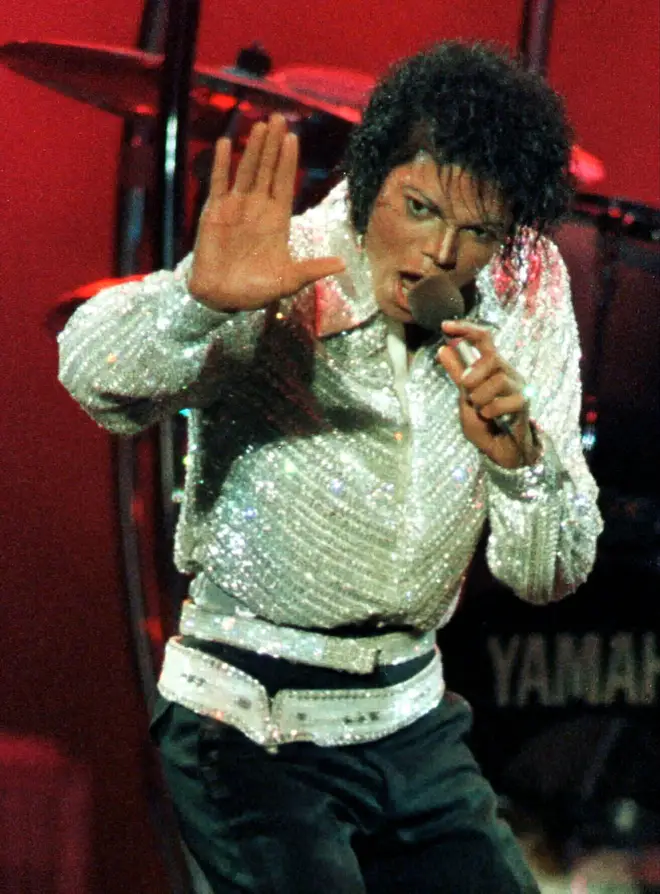
Michael Jackson co-wrote USA For Africa's 'We Are The World' which closed the US show, and was maybe the biggest star on the planet at the time, but he wasn't at Live Aid.
"Michael is just about living in the studio, rehearsing and recording," his press agent Norman Winter told the New York Times .
"I know, what could be more major than Live Aid, but Michael couldn't turn his back on his responsibility to the people he's working with.
"This affected employment for a lot of people... The project will be announced formally in a few weeks."
The project in question? Most likely the squillion-selling Bad album.
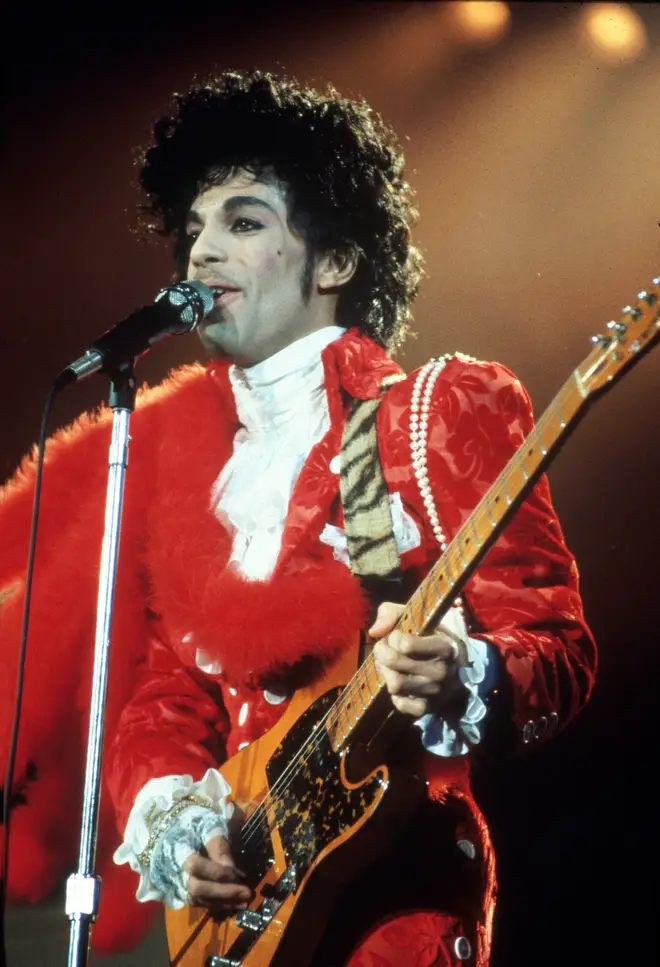
Ever enigmatic, Prince had apparently retired from live performances when Live Aid was happening.
It's claimed that he was fearful of being assassinated, just a few years after John Lennon was murdered in public.
He also pulled out of singing the “but if you just believe, there’s no way we can fall" line on 'We Are The World', despite a pleading phone call from Lionel Richie.
Prince did end up contributing '4 The Tears In Your Eyes' to the album project, and appeared via video on the actual day of Live Aid.
Bruce Springsteen
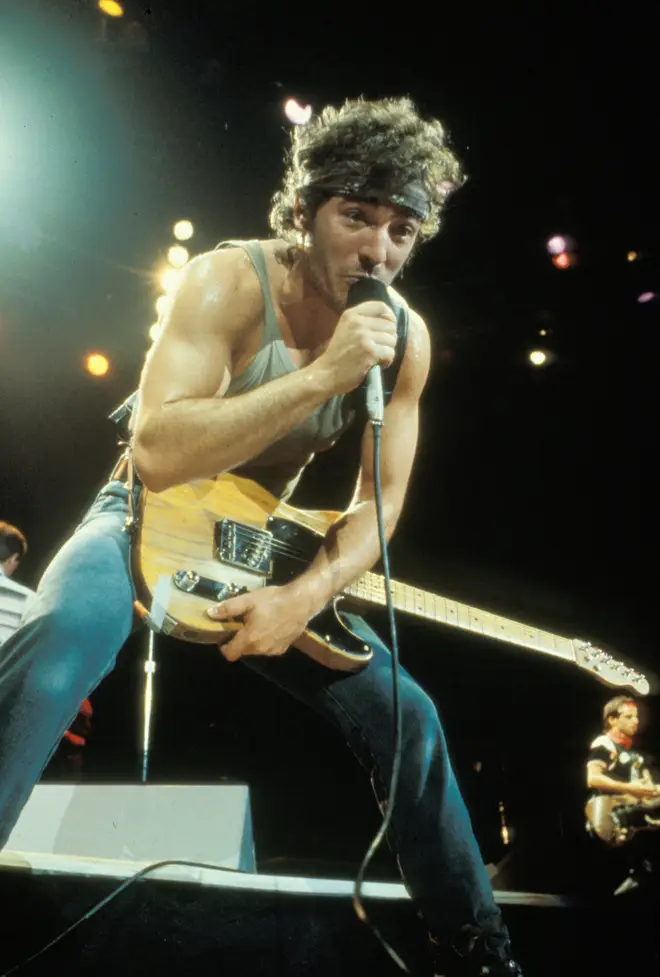
Another megastar, and one who had just played Wembley Stadium with his own band a week or so before Live Aid – in fact, some of the stage set up was borrowed from Bruce Springsteen 's gigs.
Bruce was on 'We Are The World' and covered Jimmy Cliff's 'Trapped' for the album too, but he was shattered after his own Born in the USA tour, and had only just got married that May.
He is said to have regretted not rocking up and doing a few acoustic numbers.
Stevie Wonder

Stevie Wonder was invited to play Live Aid, but refused – he apparently thought there weren't enough African-American artists on the bill.
Co-organiser Harvey Goldsmith later said: "Stevie Wonder eventually agreed to appear, but then he phoned me up and said, 'I am not going to be the token black on the show'."
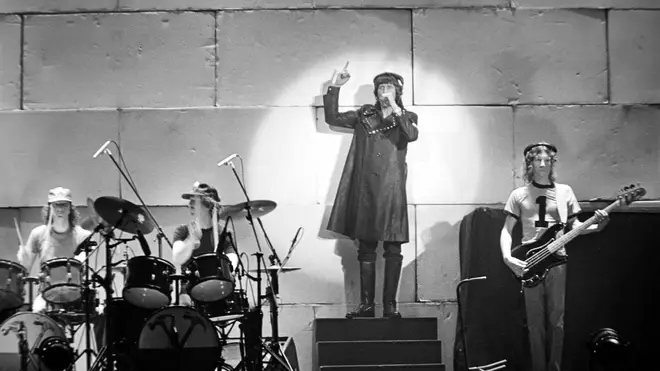
While they were technically still a going concern, Pink Floyd were having a legal bust-up at the time.
Roger Waters was in the process of leaving the band, and it wouldn't be until 1987 that Pink Floyd (without Waters) would release their next album.
David Gilmour was at Live Aid, though, as an unannounced guest with Bryan Ferry.
The Waters/Gilmour/Wright/Mason lineup of Pink Floyd would eventually play Live 8, in 2005, their first show together in 24 years.
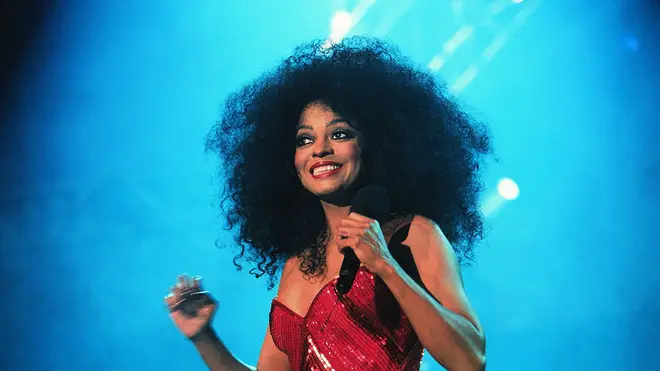
Diana Ross was busy on the road during Live Aid. It's also been suggested that she wasn't too keen on performing on a bill with other artists.
Rod Stewart

Rod Stewart only recently found out the strange reason he didn't play Live Aid .
"We actually were supposed to do it, but a few guys in the band told me that our ex-manager turned it down because I wasn't getting the right news coverage," Rod said.
"He only wanted me to do it if I got on the CBS news at 10 o'clock. He said, 'If not, he's not doing it'.
"And that's not what it was all about. It was to raise money for kids. It wasn't about what news channel you were going to be on in America."
Culture Club
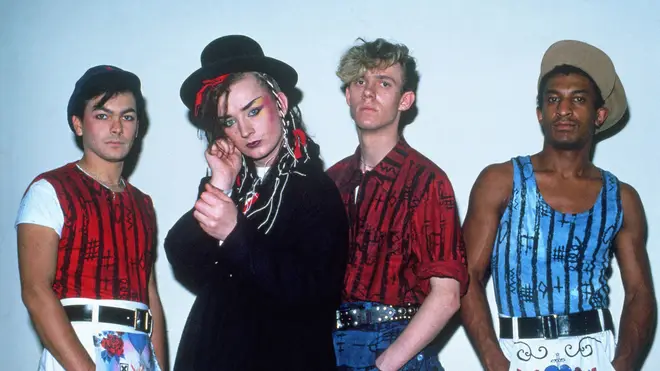
Live Aid was actually Boy George's idea – he came up with the concept during the recording of Band Aid's 'Do They Know It's Christmas?'.
But while he was a standout on that single, neither Culture Club nor he played the Live Aid show.
"I messed it up," he explained in 2020 to Louis Theroux's Grounded podcast.
"I was otherwise engaged chemicall. I mean, I think it was a stroke of luck that we didn't do it because I wasn't in a fit state to do it.
"We were originally asked but then I think everyone was just looking at the state of me and going, 'This might be more harmful than good'. So, they basically didn't follow up on it."
Tears For Fears
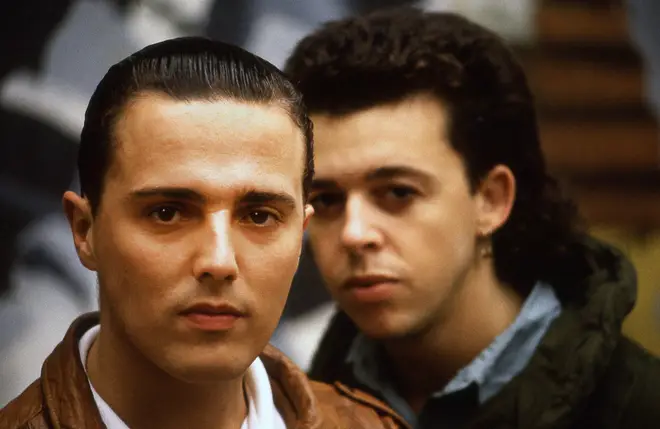
Tears For Fears were one of the (many!) acts Bob Geldof tried to bully into playing Live Aid by announcing them before they even played the show.
In the end they pulled out because the show was "bad timing".
"Initially, I was pissed off because Bob had announced we were doing it without even asking us and it was smack in the middle of a year-long tour," Curt Smith explained in 2022 .
"It was the first week off we had."We kissed and made up with Bob and did 'Everybody Wants to Run the World' for him [for Sport Aid] afterwards.
"We didn't think us not performing would affect the amount of money they were raising in any way, so we didn't do it so we could have that break."
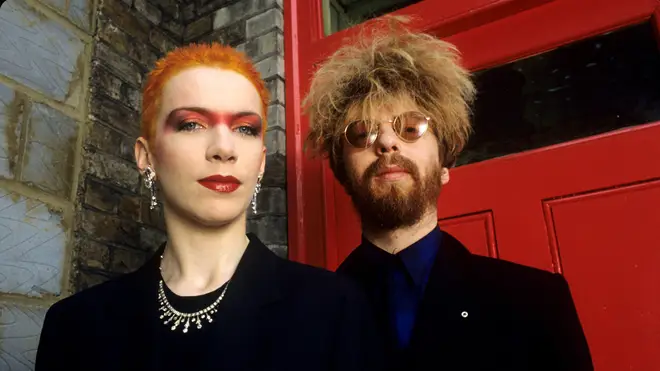
The Eurythmics were meant to play Live Aid, but poor Annie Lennox developed throat nodules and couldn't sing.
"We were asked if we could perform at Live Aid and we had just rounded off a massive 62-date tour," Annie told BBC Radio Scotland in 2007.
"My voice was shot and I was starting to develop what they call nodules on my vocal cords.
"So we said, 'I'd love to do it Bob but I just can't'."
Frankie Goes to Hollywood

Frontman Holly Johnson was very much up for playing Live Aid, but unfortunately he was the only one in the camp.
"We were invited and I wanted to do it but all of the other members of the group and our so-called manager didn't want to do it," Holly said years later .
"This was the biggest management mistake of Frankie's career."
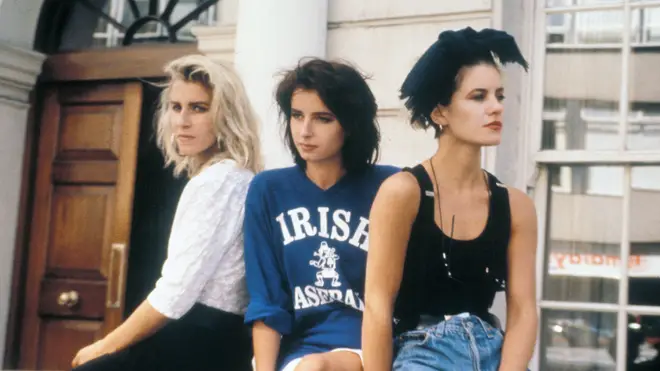
Despite appearing on the Band Aid single, they weren't at the live show.
An unattributed quote doing the rounds is that "We hadn't done any touring, so we didn't have a band".
That adds up, as the group didn't properly get on the road till 1988.
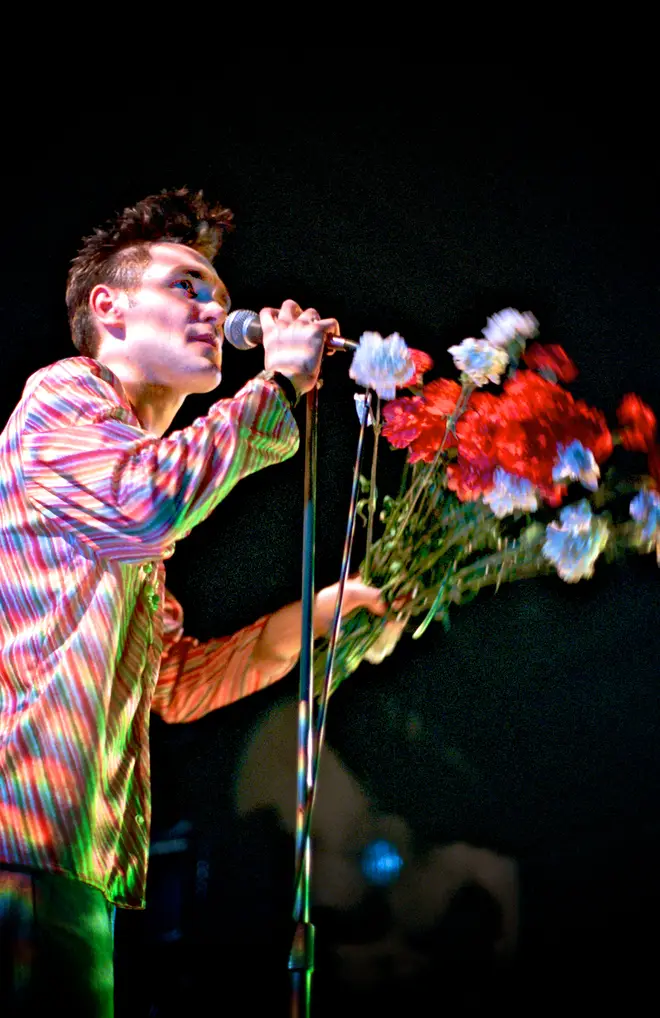
The Smiths were indie superstars in 1985, having released the number one album Meat is Murder in February and top ten single 'Heaven Knows I'm Miserable Now' a year earlier.
They may not have been big enough for Live Aid, and we don't think Morrissey would have said yes even if they had been asked.
"I'm not afraid to say that I think Band Aid was diabolical," he told Time Out .
"Or to say that I think Bob Geldof is a nauseating character. Many people find that very unsettling, but I'll say it as loud as anyone wants me to."
He added: "In the first instance the record itself was absolutely tuneless. One can have great concern for the people of Ethiopia, but it's another thing to inflict daily torture on the people of England.
"It was an awful record considering the mass of talent involved. And it wasn't done shyly it was the most self-righteous platform ever in the history of popular music."
And he wasn't done there!
"The whole implication was to save these people in Ethiopia, but who were they asking to save them? Some 13-year-old girl in Wigan!
"People like Thatcher and the royals could solve the Ethiopian problem within ten seconds. But Band Aid shied away from saying that — for heaven's sake, it was almost directly aimed at unemployed people."
Depeche Mode
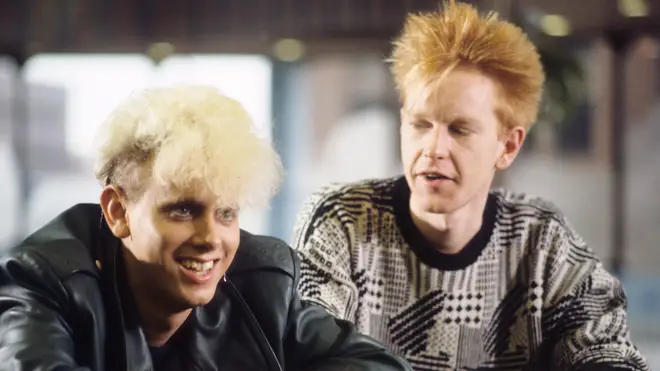
Like The Smiths, they weren't invited and wouldn't have played anyway.
"I doubt very much that we would have accepted the invitation, had we been asked," said keyboard player Alan Wilder .
"My personal view is that giving to 'chariddy' should be a totally private gesture, out of which no personal gain should be made.
"Inevitably, nearly all the artists who took part in Live Aid achieved a considerable rise in record sales and being the cynic I am, I wonder just how much of the profit gained from those sales actually ended up going to Ethiopia."
Cyndi Lauper
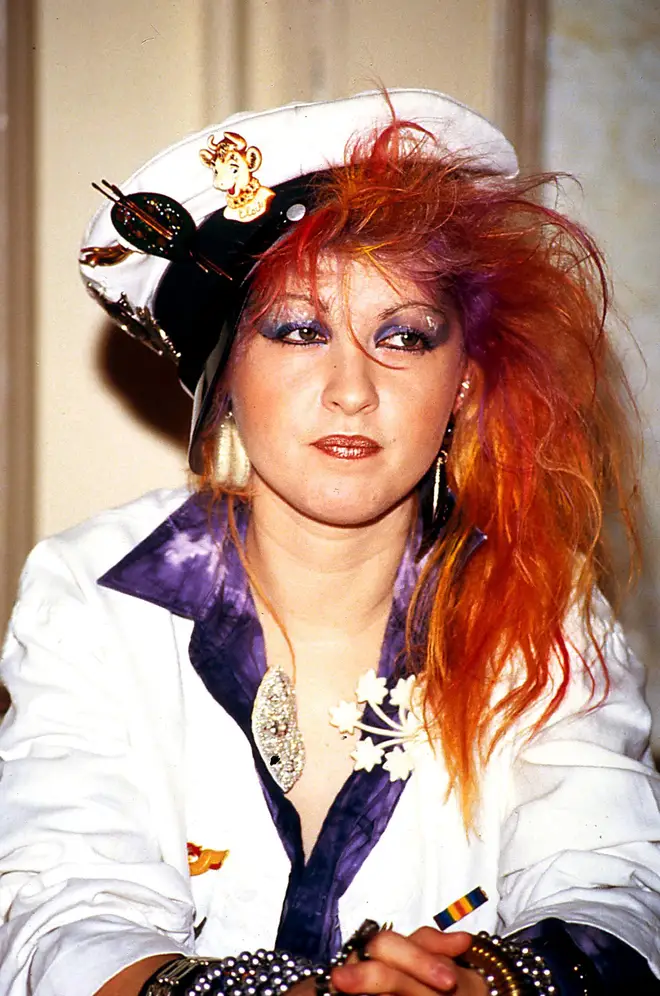
Cyndi Lauper was meant to be at the Philly leg of Live Aid to sing a duet with Patti LaBelle, but didn't make it.
For what it's worth, Joan Baez, who did play the show, writes in her memoir that Cyndi underwent "a mysterious abdominal surgery that she never discusses".
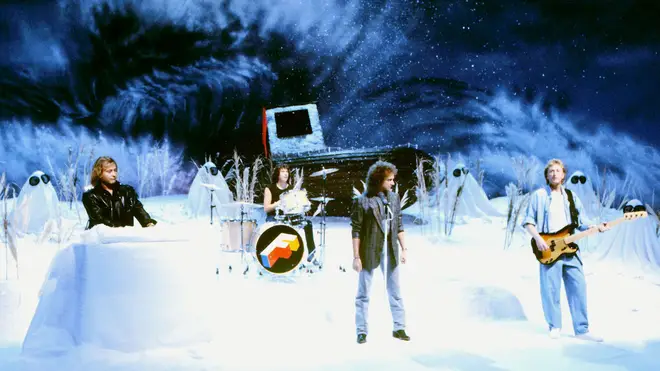
Foreigner are one of the groups who were apparently quite eager to appear at Live Aid but were turned down.
It's said that Philadelphia show organiser Bill Graham said there wasn't any room on the bill.
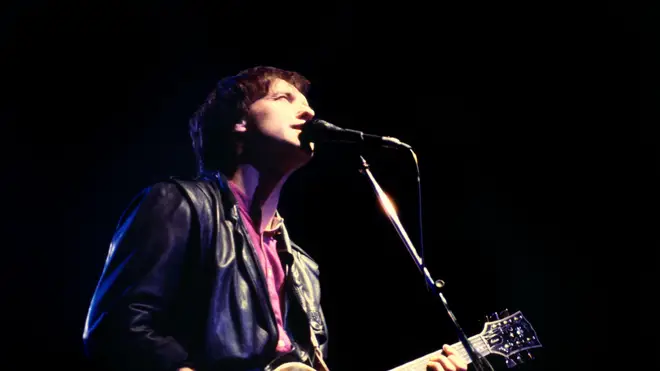
One of the few 1960s bands who just kept going through the 1970s and 1980s (they would eventually split in 1996), the Kinks apparently wanted to play the Wembley Stadium show but were deemed "not famous enough".
Donna Summer
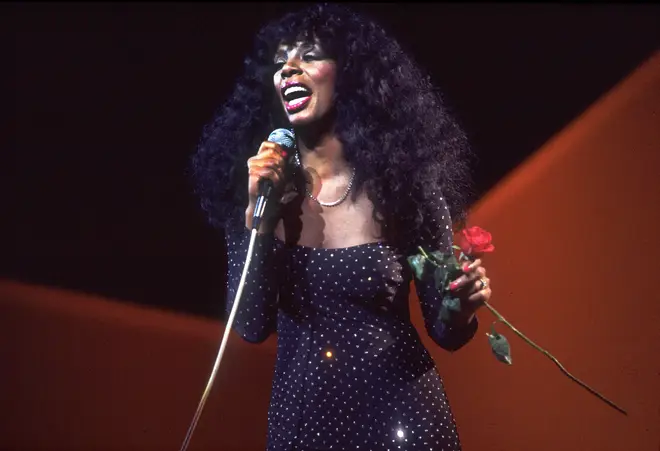
Donna Summer was unfortunately busy in the studio when Live Aid was happening.
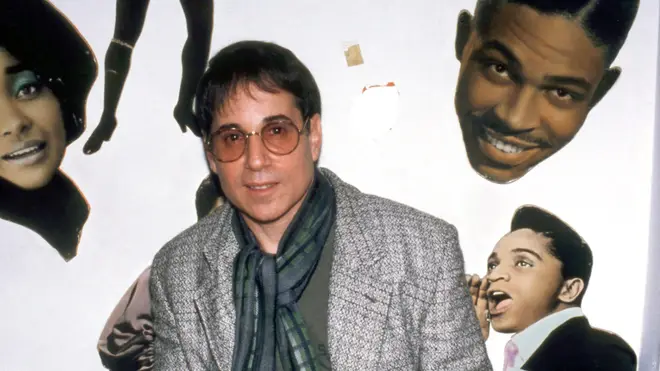
"I rang Paul Simon, whom I'd met and had an enjoyable argument with before," Bob Geldof said in his Is That It memoir.
"He said yes. Better than that, he said he'd try to persuade Dylan and maybe the two of them would do something together."
So far, so good, but then..
"Paul Simon rang. He was being messed about and he was upset. Every time he phoned anyone over there to get things organised he met a blank wall.
"He thought the whole thing was a mess. He felt that people were being deliberately obstructive to him and, as he and Bill Graham don't get on, had decided to pull out."
Huey Lewis and the News
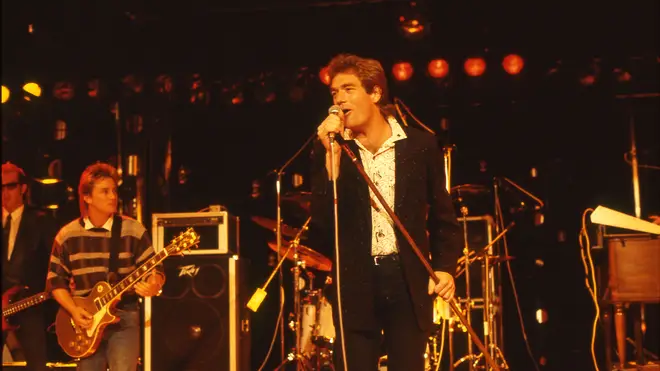
Originally booked to play Philadelphia, Huey Lewis and the News (who had appeared on 'We Are The World') pulled out just two weeks before the show.
The group were worried that the money raised by the USA for Africa single hadn't been proper spent supporting those affected by the famine in Ethiopia – concerns that actually ended up being pretty well-founded according to later news reports.

Another artist whose name was on the official poster who didn't end up playing.
"I was going to participate in Live Aid," Billy Joel said in an interview that year.
"I couldn't get all the guys in my band together. And I'll tell you, to go out in a stadium and just play the piano is a little bit rough
"Maybe in a room this size with a piano sure, but not in front of a paying audience."
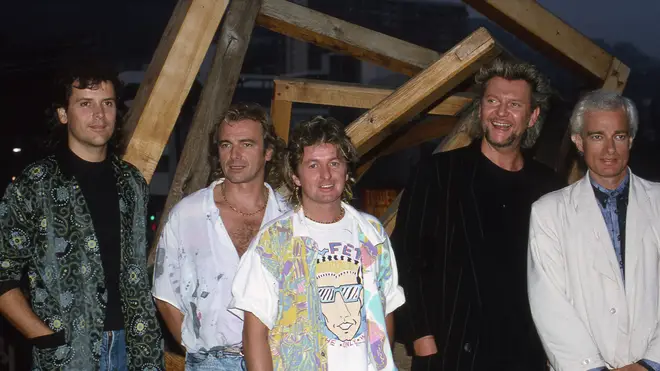
Like Foreigner, Yes apparently wanted to play the show but were told No by Bill Graham because the bill was already too packed.

Van Halen were massive in 1985, but Live Aid came just as the band were falling apart, with singer David Lee Roth in the process of leaving the group and his replacement Sammy Hagar was yet to join.
Peter, Paul and Mary
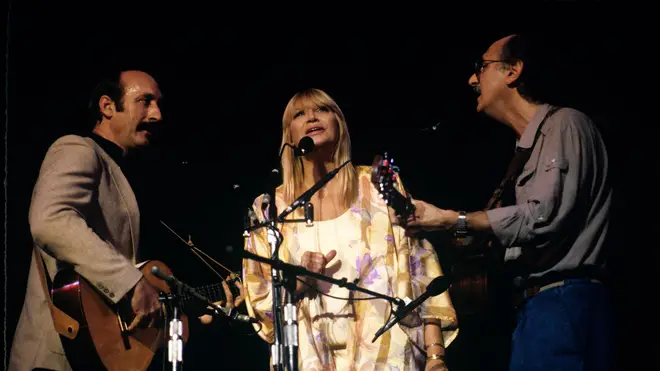
The folk trio of Peter, Paul and Mary were keen to play at Live Aid and were originally in the frame to join Bob Dylan to play 'Blowin' in the Wind'.
But Bob changed his mind late in the day, and enlisted Rolling Stones stars Keith Richard and Ronnie Wood as his backing band instead.
The Rolling Stones
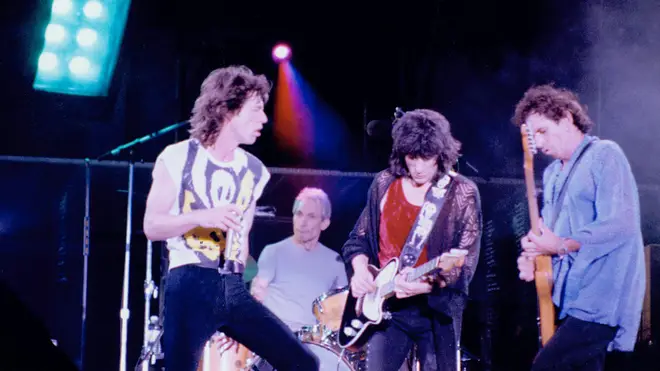
So Keith Richards and Ronnie Wood were with Bob Dylan, and Mick Jagger played a set just before – so why didn't The Rolling Stones play together?
Word was that Mick and Keith were in the middle of one of their regular bustups so they played separately instead.
Stones bassist Bill Wyman had apparently warned Geldof off approaching the Stones in the first place because "Keith doesn't give a f**k".
Deep Purple
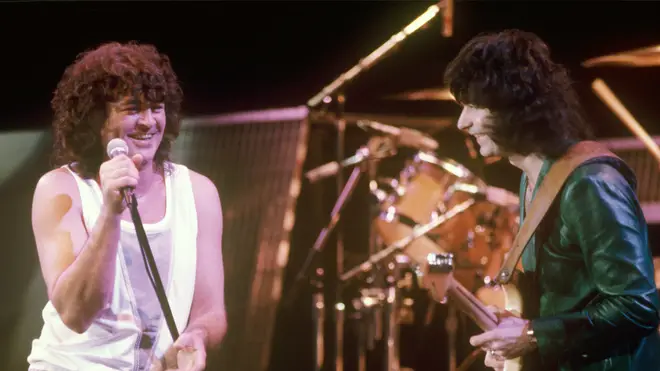
While they were never actually booked to appear in London or Philadelphia, Deep Purple were meant to join the broadcast via a satellite linkup from a show at the Hallenstadion in Switzerland.
Singer Ian Gillan is quoted as saying that guitarist Richie Blackmore pulled the plug on the idea.
The Grateful Dead
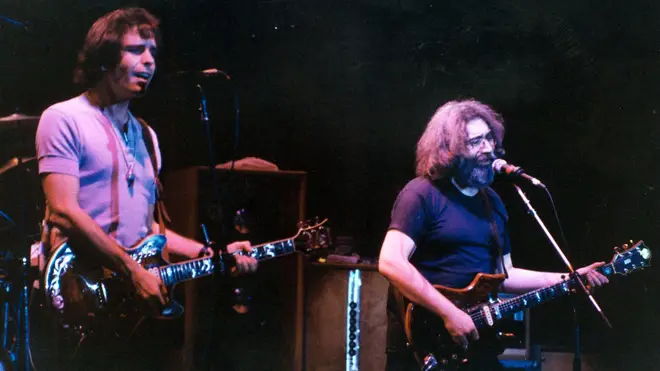
Put simply, the never-ending touring Grateful Dead were perhaps unsurprisingly on tour when Live Aid happened, playing a set at Ventura, California.
Def Leppard
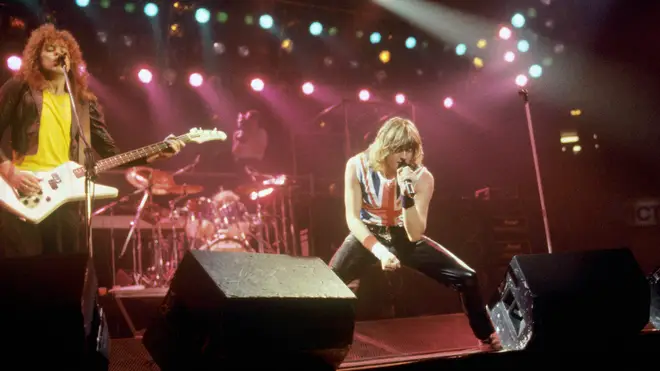
"We were initially asked to do the original one 20 years ago," lead singer Joe Elliott told Launch Radio head of Def Leppard's Live 8 show.
""Unfortunately, it fell about four months after Rick lost his arm.
So we, we – his recovery hadn't happened, and we weren't... no way were we gonna to do it with a, a different drummer, you know, so we had to pass on it."
The Thunder God Rick Allen survived a car accident in 1985 and after his recovery uses custom built kit to drum one-handed.
Johnny Cash, Waylon Jennings, Willie Nelson and Kris Kristofferson
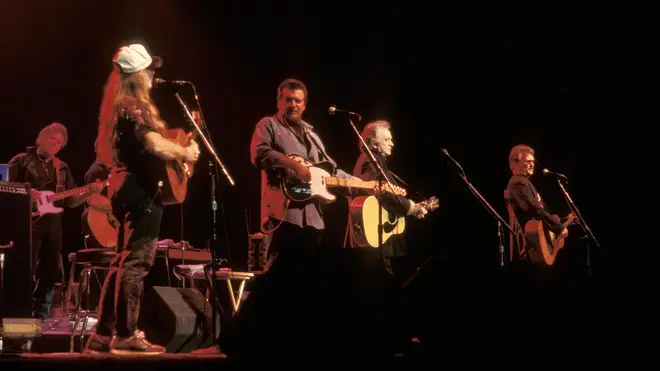
These four outlaw country music icons had joined forces in 1984 to form the supergroup The Highwaymen.
Their debut album came out just a few months before Live Aid, and none of the quartet appeared at either show..
Kris Kristofferson was on the poster, but didn't perform. The same was true of Waylon Jennings. Willie Nelson and Johnny Cash weren't even in the running
What's striking is that all four men appeared at the first Farm Aid concert a couple of months later. All would go on to appear at future Farm Aids, and The Highwaymen also appeared in 1992 and 1993.
So what was Farm Aid?
"I hope that some of the money... maybe they can just take a little bit of it, maybe ... one or two million, maybe ... and use it, say, to pay the mortgages on some of the farms and, the farmers here, owe to the banks," said Bob Dylan controversially during his closing Live Aid set in Philadelphia.
The comment attracted plenty of criticism, but it also inspired Willie Nelson, John Mellencamp and Neil Young to establish Farm Aid, which has run every year since.
Last Played Songs
Latest music news, ringo starr is reunited with john lennon's long-lost 12-string help guitar.
The Beatles
Mike Pinder, founding member of The Moody Blues, dies aged 82
The heartbreaking reason why elvis presley turned down barbra streisand's 'a star is born'.
Elvis Presley
13 massive hit singles that were originally B-sides
Pink floyd's david gilmour announces his first album of new songs in nearly a decade, more from gold, when the beach boys went rock ‘n’ roll with crazed cover of chuck berry’s 'johnny b goode'.
The Beach Boys
Marvin Gaye's 15 greatest songs, ranked
Wings' long-lost album including beatles classics is finally getting a release after 50 years.
Paul McCartney
Jon Bon Jovi reveals the story behind Livin' on a Prayer: "We didn't always have a key change"
When status quo helped manchester united score a number one hit with 'come on you reds', 10cc's graham gouldman announces new album featuring ringo starr, brian may and hank marvin.
- History Classics
- Your Profile
- Find History on Facebook (Opens in a new window)
- Find History on Twitter (Opens in a new window)
- Find History on YouTube (Opens in a new window)
- Find History on Instagram (Opens in a new window)
- Find History on TikTok (Opens in a new window)
- This Day In History
- History Podcasts
- History Vault
This Day In History : July 13
Changing the day will navigate the page to that given day in history. You can navigate days by using left and right arrows
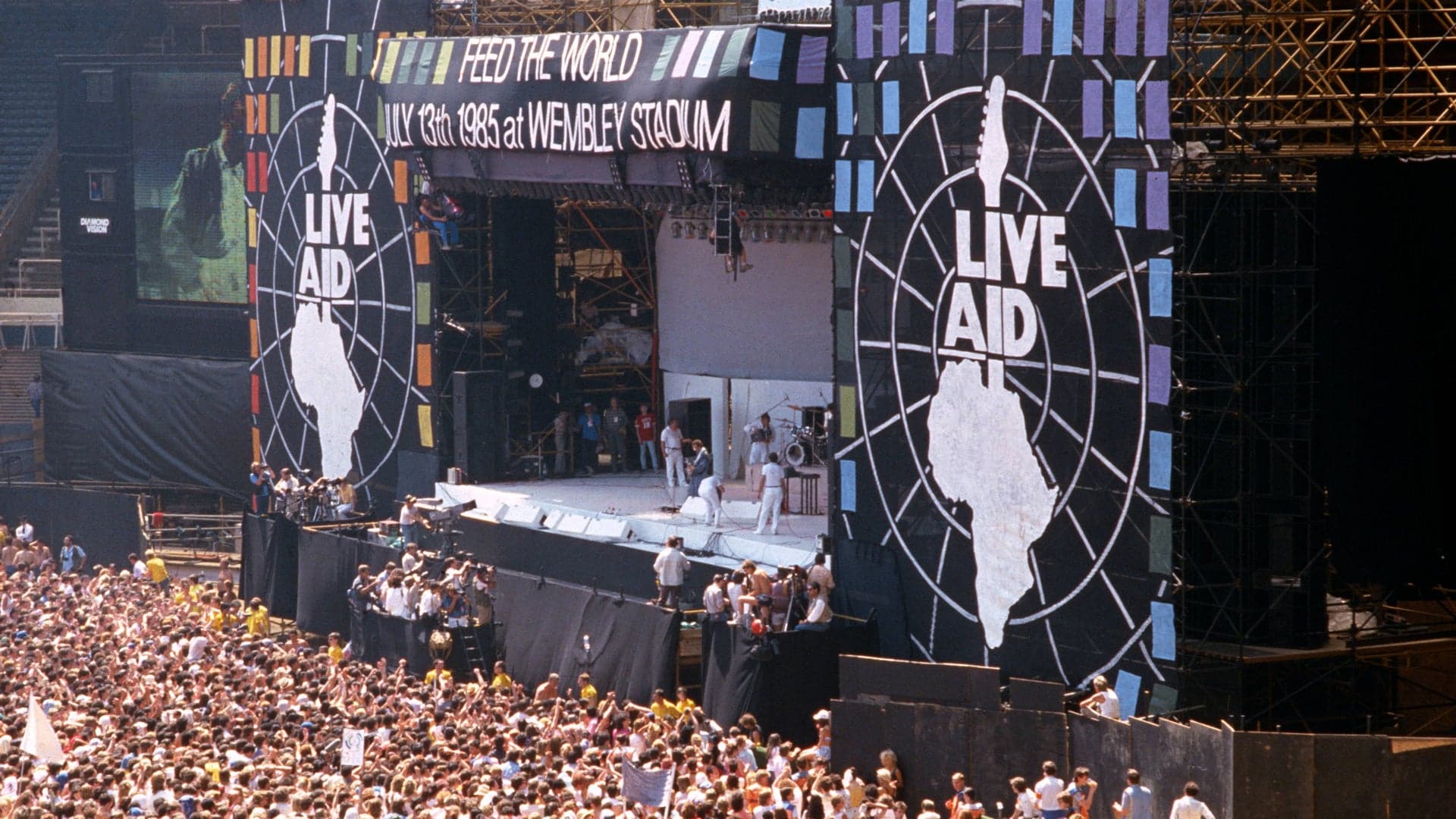
Live Aid concert raises $127 million for famine relief in Africa
On July 13, 1985, at Wembley Stadium in London, Prince Charles and Princess Diana officially open Live Aid, a worldwide rock concert organized to raise money for the relief of famine-stricken Africans. Continued at JFK Stadium in Philadelphia (where Joan Baez famously kicked it off by telling the crowd "this is your Woodstock , and it's long overdue") and at other arenas around the world, the 16-hour “superconcert” was globally linked by satellite to more than a billion viewers in 110 nations. In a triumph of technology and good will, the event raised more than $125 million in famine relief for Africa.
Live Aid was the brainchild of Bob Geldof, the singer of an Irish rock group called the Boomtown Rats. In 1984, Geldof traveled to Ethiopia after hearing news reports of a horrific famine that had killed hundreds of thousands of Ethiopians and threatened to kill millions more. After returning to London, he called Britain’s and Ireland’s top pop artists together to record a single to benefit Ethiopian famine relief. “Do They Know It’s Christmas?” was written by Geldof and Ultravox singer Midge Ure and performed by “Band Aid,” an ensemble that featured Culture Club, Duran Duran, Phil Collins, U2, Wham! and others. It was the best-selling single in Britain to that date and raised more than $10 million.
“Do They Know It’s Christmas?” was also a No. 1 hit in the United States and inspired U.S. pop artists to come together and perform “ We Are the World ,” a song written by Michael Jackson and Lionel Richie. “USA for Africa,” as the U.S. ensemble was known, featured Jackson, Richie, Geldof, Harry Belafonte, Bob Dylan, Cyndi Lauper, Paul Simon, Bruce Springsteen, Tina Turner, Stevie Wonder, and many others. The single went to the top of the charts and eventually raised $44 million.
With the crisis continuing in Ethiopia, and the neighboring Sudan also stricken with famine, Geldof proposed Live Aid, an ambitious global charity concert aimed at raising more funds and increasing awareness of the plight of many Africans. Organized in just 10 weeks, Live Aid was staged on Saturday, July 13, 1985. The lineup featured more than 75 acts, including Elton John, Queen, Madonna, Santana, Run DMC, Sade, Sting, Bryan Adams, the Beach Boys, Mick Jagger, David Bowie, Duran Duran, U2, the Who, Tom Petty, Neil Young and Eric Clapton. The majority of these artists performed at either Wembley Stadium in London, where a crowd of 70,000 turned out, or at Philadelphia’s JFK Stadium, where 100,000 watched. Thirteen satellites beamed a live television broadcast of the event to more than one billion viewers in 110 countries. More than 40 of these nations held telethons for African famine relief during the broadcast.
A memorable performance of the concert was by Queen, particularly frontman Freddie Mercury, who unexpectedly stole the show with a fierce performance. With the group losing steam as they went into the early 1980s after a career of multiple hits, they offered the crowd an unforgettable 20-minute performance. Going from "Bohemian Rhapsody" to "We Will Rock You" and finishing with "We Are the Champions," Queen captivated the audience with a journey through their hits, with Mercury at the helm.
Another top moment was by Phil Collins in Philadelphia after flying by Concorde from London, where he performed at Wembley earlier in the day. He later played drums in a reunion of the surviving members of Led Zeppelin. Beatle Paul McCartney and the Who’s Pete Townsend held Bob Geldof aloft on their shoulders during the London finale, which featured a collective performance of “Do They Know It’s Christmas?” Six hours later, the U.S. concert ended with “We Are the World.”
Live Aid eventually raised $127 million in famine relief for African nations, and the publicity it generated encouraged Western nations to make available enough surplus grain to end the immediate hunger crisis in Africa. Geldof was later knighted by Queen Elizabeth II for his efforts.
In early July 2005, Geldof staged a series of “Live 8″ concerts in 11 countries around the world to help raise awareness of global poverty. Organizers, led by Geldof, purposely scheduled the concert days before the annual G8 summit in an effort to increase political pressure on G8 nations to address issues facing the extremely poor around the world. Live 8 claims that an estimated 3 billion people watched 1,000 musicians perform in 11 shows, which were broadcast on 182 television networks and by 2,000 radio stations. Unlike Live Aid, Live 8 was intentionally not billed as a fundraiser–Geldof’s slogan was, “We don’t want your money, we want your voice.” Perhaps in part because of the spotlight brought to such issues by Live 8, the G8 subsequently voted to cancel the debt of 18 of the world’s poorest nations, make AIDS drugs more accessible and double levels of annual aid to Africa, to $50 billion.
Also on This Day in History July | 13

Sandra Bland dies in jail after traffic stop confrontation
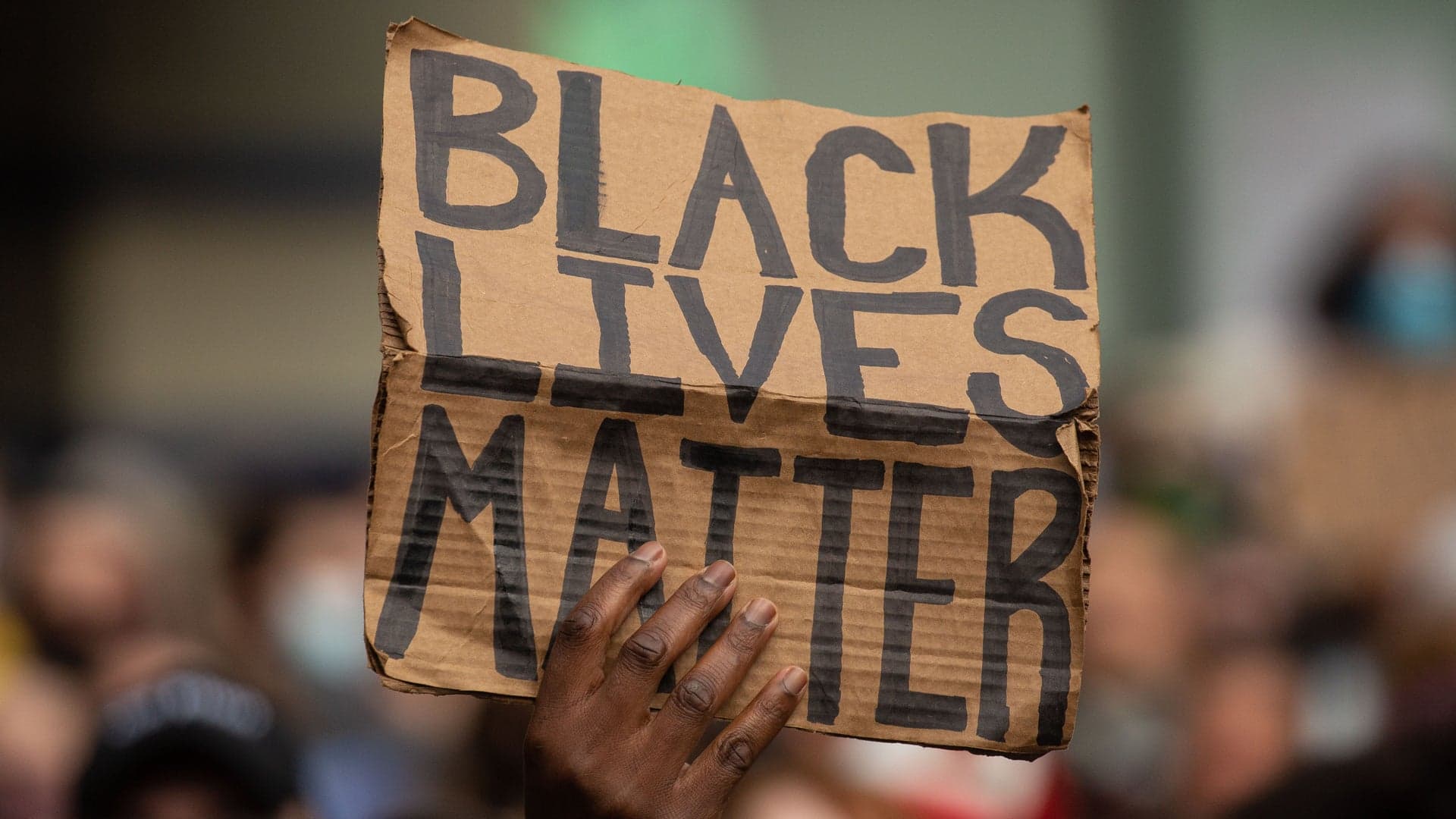
The hashtag #BlackLivesMatter first appears, sparking a movement
This day in history video: what happened on july 13, john f. kennedy nominated for presidency, largest tank battle in history ends, charlotte corday assassinates french revolutionary jean-paul marat.

Wake Up to This Day in History
Sign up now to learn about This Day in History straight from your inbox. Get all of today's events in just one email featuring a range of topics.
By submitting your information, you agree to receive emails from HISTORY and A+E Networks. You can opt out at any time. You must be 16 years or older and a resident of the United States.
More details : Privacy Notice | Terms of Use | Contact Us
Henry Ford II fires Lee Iacocca
George wallace criticizes president nixon’s handling of the war, first world cup, "ghost" opens in theaters, last woman hanged for murder in great britain, congress enacts the northwest ordinance.
20 minutes that changed the history of music: Remembering Live Aid 1985
- Carlos Santana ,
- Live Aid ,

Music, like history, on its own, is vast and full of surprising stories with unexpected turns and endings. It’s those unplanned and iconic moments that brought us some of the most important figures in music history.
Inspired by a report from the BBC in October 1984, activist and composer Bob Geldof , along with his partner, musician Midge Ure , created a charity Christmas single together named “Do They Know It’s Christmas?” featuring Phil Collins, U2 , and Duran Duran along with many other artists with the objective of raising awareness of the Ethiopian famine crisis during the 1980’s which claimed the life of an estimated 1 million people.
However, this collaboration was just the beginning. It wasn’t until the morning of July 13, 1985, that one of the biggest events in the history of rock music would take place. Over two billion people around the world would turn on their TVs to see the live broadcast of Live Aid —a 16 hour musical event held in London and Philadelphia that brought together some of the greatest musicians from the 80’s and raised funds to provide food, medicine, and other vital items for the crisis becoming one of the biggest and most successful charity events in the world.

With a lineup featuring more than 75 artists, including Elton John , Madonna , Carlos Santana , David Bowie , U2 , and Eric Clapton , there’s no doubt that many of the viewers hold one specific moment of the show in their hearts, the moment where the legendary icon and frontman of Queen, Freddie Mercury, got on the stage along with Brian May , John Deacon and Roger Taylor for a memorable 20 minute performance.
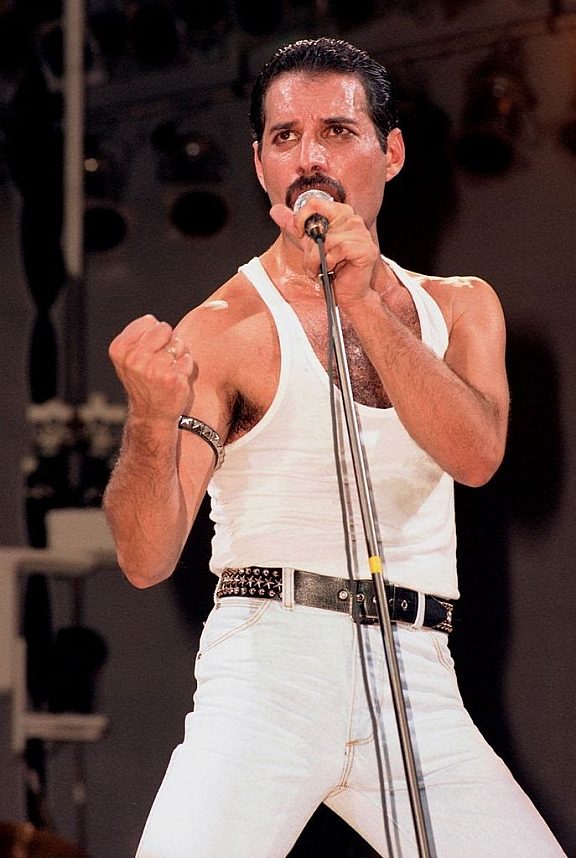
The quiet noises from the audience were suddenly awakened when Mercury started to play the first notes of “Bohemian Rhapsody,” and the stadium filled with singing voices and hands up in the air following the rhythm of “Radio Gaga.” But not only was Queen’s music legacy what made this performance one of the most memorable moments of Live Aid, Mercury’s charisma and creativity were also a living signature in each of Queen’s concerts and this time was no different. Without asking and with a single gesture, Mercury started to vocalize, followed by a perfectly synchronized audience, their voices following the artist’s gestures with an almost perfect pitch.
Without a doubt, Live Aid has proven that music can inspire people to act for a greater cause, reaching every single person in the world and creating a bond between all of us, an unbreakable bond that grows stronger when our hearts come together through the power of music.
Feel the spirit within these songs performed at Live Aid in the style of Playing For Change:
Also, check out this playlist with the best rock jams from PFC:
Playing For Change
Become a member or login to comment
Related stories.

THE KING – A Musical Journey in Elvis’ 1963 Rolls Royce
- The King ,
- Eugene Jarecki

Celebrating the life of a LEGEND| Happy Birthday Bob Marley
- Song Around The World ,
- Live Outside ,

The Master of Tabla: Zakir Hussain
- Zakir Hussain ,
- Indian Classical Music ,

Amazing Artists With Indigenous Roots That You Should Know
- Mihirangi ,
- Pete Sands ,
- Derrick Suwaima Davis
Live Aid: The Complicated History of the World's Biggest Charity Concert
By kenneth partridge | jul 3, 2022, 10:52 am edt.
Pop music didn’t suddenly discover altruism in the 1980s. The idea of the star-studded charity concert dates at least as far back as 1971, which is when former Beatle George Harrison organized The Concert for Bangladesh, a benefit for refugees in the former East Pakistan. But do-gooder musicians took it to the next level in the '80s—the decade of “We Are the World,” Farm Aid, Band Aid , and of course, Live Aid.

Live Aid, which took place on July 13, 1985 for a global audience of 1.9 billion people, was a massive, bicontinental pop concert created to raise money for Ethiopian famine relief. It was the brainchild of Bob Geldof, leader of the Irish new wave band The Boomtown Rats. Geldof was spurred to philanthropic action after seeing a BBC report in October 1984 that featured footage of starving children. His first thought was to make a charity single.
Geldof enlisted his buddy Midge Ure, the frontman of the band Ultravox, to help him write and record “ Do They Know It’s Christmas ” just a few weeks later. The single, which was released on December 3, 1984, was credited to Band Aid—an amalgamation of the day’s biggest pop stars, including George Michael , Boy George, and Bono. It reached No. 1 on the UK charts and raised more than $28 million for the cause. But that wasn’t enough for Geldof. At least not if the Band Aid organization was going to buy a fleet of trucks to move food and supplies to Ethiopians in need, as Geldof hoped. So he took the next logical step and planned a concert.

Setting the Stage
Much has been said and written about Live Aid over the last 35 years. To some, it was a beautiful moment of idealism and compassion. Others question the motives and effectiveness of a bunch of wealthy celebrities—most of them white—trying to swoop in and save Africa.
To measure the success of Live Aid, one needs to consider three different things: numerical data, entertainment value, and overall impact. By the first of these metrics, sheer numbers, Live Aid was an overwhelming triumph. Geldof and company secured both Wembley Stadium in London and John F. Kennedy Stadium in Philadelphia to host the concert on two continents. Using industry connections, persuasion, and a little bit of trickery, Geldof was able to book more than 50 of the music industry's biggest names, including Queen , David Bowie , Elton John , Paul McCartney , The Who, Bob Dylan , U2, and Madonna.
“He had to call Elton and say 'Queen are in and Bowie's in,' and of course they weren't,” production manager Andy Zweck told The Guardian of Geldof’s tactics. “Then he’d call Bowie and say 'Elton and Queen are in.' It was a game of bluff.”
With the help of producer Michael C. Mitchell , Live Aid sold broadcast rights to 150 countries, at least 22 of which aired telethons. Both MTV and ABC carried the feed in the United States, the latter in the form of a primetime special hosted by Dick Clark. All told, Live Aid raised approximately $140 million.
A Musical Twofer
Of course, Live Aid wasn’t just about fundraising. It also had to be a great show—or else why would people bother to watch it in the first place? As it happened, the day was filled with memorable performances on both sides of the Atlantic. The consensus pick for Live Aid MVP is Queen, whose 21-minute Wembley set included “ Bohemian Rhapsody ,” “We Will Rock You,” and “We are the Champions.” Mercury "strutted and preened, carrying his microphone on a metal pole that he treated as a vaudevillian’s cane, an air guitar, and, of course, a phallus," The New York Times wrote of Mercury's performance. "He was a rock star playing a rock star, leather-lunged and imperious but also grinning to let everyone share the joke ... For 21 minutes, Freddie Mercury undeniably made the world his stadium." In 2005, Queen’s Live Aid set was voted the greatest rock gig in history by a panel of music industry experts.
Less than two hours before Queen hit the stage, U2 wowed Wembley with a performance that cemented their status as future stadium kings. During their 11-minute rendition of “ Bad ,” Bono plucked a 15-year-old fan named Kal Khalique from the crowd and slow-danced with her as if no one else was watching. Of course, U2 knew everyone was watching, and while Khalique has claimed that Bono saved her from being crushed, the mulletted rocker may have engineered the moment for TV cameras. Either way, it worked.
Live Aid was also a big day for Run-DMC, and hip-hop in general. In 1985, pop radio stations were still reluctant to play this new form of music, and the Queens rappers undoubtedly raised some eyebrows as they took the stage in Philly with no band—just DJ Jam Master Jay behind two turntables. “We got a whole lot of rock groups backstage tonight, but D wants y’all to know one thing," Joseph “Run” Simmons told the crowd, just before launching into “ King of Rock .” Run-DMC later boasted about their Live Aid win on 1986’s “My Adidas,” rapping, “Stepped on stage, at Live Aid, all the people gave, and the poor got paid!”
One man who literally went the distance for the cause was Phil Collins. The Genesis frontman and chart-dominating solo artist performed with Sting at 3:15 p.m. in London, then jumped on the Concorde and flew to Philly to play his own set and serve as drummer for Eric Clapton and a reunited Led Zeppelin. Most people agree that the Zeppelin set was a total disaster—the band was under-rehearsed and out of tune. But decades later, Collins’s ocean-hopping stunt is what people remember. “I was in England this afternoon,” Collins told the Philly crowd. “Funny old world, innit?”
Other highlights included Madonna getting into the groove , Mick Jagger turning up the heat with Tina Turner, and Elton John and George Michael dueting on “ Don’t Let the Sun Go Down On Me .” Bob Dylan planted the seeds for another charity concert, Farm Aid, when he took a moment during his performance with Keith Richards and Ron Wood of The Rolling Stones to suggest that some of the money be used to help struggling American farmers.
The Diversity Divide
In all, the shows offered a good mix of Baby Boomer favorites (Dylan, Neil Young, Paul McCartney) and hip younger acts (Elvis Costello, The Style Council, Adam Ant, Thompson Twins). But Live Aid did have a diversity problem.

About a month before the show, legendary concert promoter Bill Graham said that “every major Black artist on the Billboard 200 chart and R&B chart” had been approached. Many artists, including Michael Jackson, Diana Ross, and Prince , had simply declined to perform. But others, including Dionne Warwick, said they’d never been invited. As the concert date grew closer, Live Aid organizers scrambled to add more Black artists, including The Four Tops, Tina Turner, and Patti LaBelle.
“After the concert, we were lambasted for not having enough Black artists on the bill. It became this anti-colonial diatribe, ‘You whites, telling us poor Black guys what to do,’” Midge Ure told the Independent . “It was unfair but it happened.”
The lasting impact of Live Aid remains a far greater source of controversy. In 1986, SPIN ran a story titled “ Live Aid: The Terrible Truth ” which claimed that food and aid money were bolstering the government of dictator Lt. Col. Mengistu Haile Mariam, the man most responsible for Ethiopia’s suffering. According to SPIN , Mengistu used food to lure people into camps that allowed his regime to forcefully relocate hundreds of thousands of Ethiopians. Mengistu reportedly also used Western aid to purchase arms from the Soviets to use in his fight against rebels.
In a 2005 piece for The Guardian , David Rieff paraphrased Ethiopia expert Alex de Waal and wrote that Live Aid cut the famine death toll by “between a quarter and a half.” “The problem is that it may have contributed to as many deaths,” Rieff added.
Geldof has always defended Live Aid’s use of funds. “I said as early as January 1985, I will shake hands with the devil on my left and on my right to get to the people we are meant to help,” he said in response to the SPIN exposé. Geldof later said that Live Aid was “almost perfect in what it achieved.” He was knighted by Queen Elizabeth II in 1986 in recognition of his work in helping Africa's starving population.
The Live Aid Legacy
One thing Live Aid definitely did was put Ethiopia on Americans' and Europeans' radars. It also created a new template for high-profile musical benefits. Farm Aid launched in 1985; three years later, in 1988, Bruce Springsteen, Sting, Peter Gabriel, and others crossed the globe as part of the Human Rights Now! tour on behalf of Amnesty International. There was The Concert for New York City after 9/11 and The SARS Benefit Concert in 2003. In 2005, Geldof revisited the Live Aid model with Live 8 , a series of concerts aimed at convincing the G8 leaders to forgive debt for African nations and enact fairer trade laws.
In 2007, Al Gore helped to organize Live Earth, which was essentially Live Aid for climate change . Geldof was critical of the event, which he said lacked “a final goal.” “I would only organize this if I could go on stage and announce concrete environmental measures from the American presidential candidates, Congress, or major corporations,” Geldof said.
Geldof made headlines again in March 2020, amid the COVID-19 pandemic , when he helped pop singer Rita Ora design an emblem to promote the WHO and UN’s COVID-19 Solidarity Response Fund. In an interview with the Toronto Sun , Geldof gave Ora most of the credit for the logo. The man who mobilized the world for a single cause 35 years earlier also seemed less convinced that human beings—musicians or otherwise—were any match for humanity itself.
“The Achilles heel of humanity is its hubris,” Geldof said. “We think that we can dominate everything but nature just comes along and wipes us out.
“What’s positive is that people understand how fragile we are and they also understand the bravery of all the people who are working to help ... But that will fade over a very short period when we go back to the same old, same old. It’s simply a function of globalization and that’s not going anywhere.”
- Inventors and Inventions
- Philosophers
- Film, TV, Theatre - Actors and Originators
- Playwrights
- Advertising
- Military History
- Politicians
- Publications
- Visual Arts
Live Aid 1985
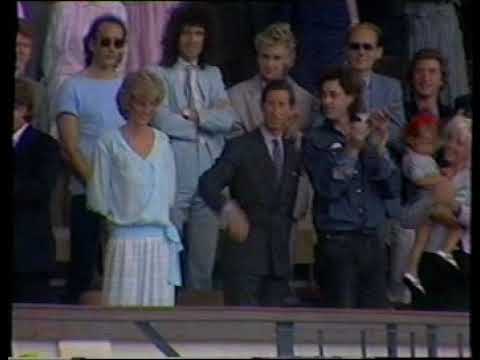
A Landmark in British Heritage and Global Philanthropy.
Introduction
Contribution to british heritage, legacy of live aid, success and impact.
- Live Aid en.wikipedia.org
You might also like
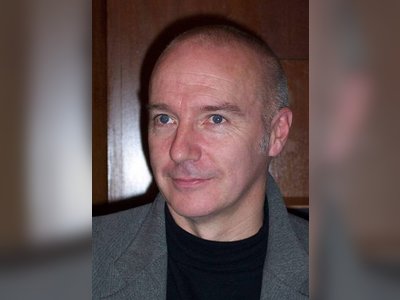
Queen at Live Aid: the real story of how one band made rock history
Queen's Live Aid performance has become the stuff of legend – we look back at how the iconic set really happened

Queen 's Live Aid performance in July 1985 may have clocked in at just 17 minutes, but they were 17 minutes which would both make rock history and transform the band for good. Though they'd enjoyed continued success with their platinum-selling 11th album The Works in 1984, as the mid-80s beckoned, frontman Freddie Mercury found himself disillusioned and searching for something new.
“We were all forming a sort of a rut," Mercury said at the time. "I wanted to get out of this last 10 years of what we were doing. It was so routine. It was like, go to the studio, do an album, go out on the road, go round the world and flog it to death, and by the time you came back it was time to do another album. After a while itʼs like a painter… you know, you paint away, and then you stand back and look at it in perspective. Thatʼs exactly what we needed. We just needed to be away from each other, otherwise you just keep going in that routine and you donʼt even know if youʼre going down.”
The answer, it turned out, was Live Aid. A benefit show pulled together by Bob Geldof and Midge Ure in aid of the Ethiopian famine, the concert – dubbed by the organising parties as "the day music changed the world" – brought together some of rock's biggest stars over two venues in London and Philadelphia. In a day filled with memorable performances – here's looking at you, Led Zeppelin – Queen's Live Aid performance truly stole the show.

The 50 best Queen songs of all time
We asked, you voted: here are the 50 songs Queen fans deemed champions of them all
Kicking off with an abridged version of 1975 mega-hit Bohemian Rhapsody , Queen's Live Aid setlist tore through a medley of their best-loved hits: Radio Ga Ga gave way to Hammer To Fall , before Crazy Little Thing Called Love , We Will Rock You and a rousing We Are The Champions closed their set. This was all before Mercury and guitarist Brian May stole the stage during the show's grand finale with their acoustic rendition of Is This The World We Created? – a moment on which Mercury later remarked: “It looks as if we wrote Is This the World We Created? for this event, but we didn’t, although it seems to fit the bill.”
The performance helped transform them into a wonderfully camp, sleek and ubiquitous rock band, and the biggest British live act of the 80s. That their Live Aid performance provides the start and end point of recent biopic Bohemian Rhapsody further illustrates the pivotal moment the band's remaining members feel it played in defining their career.
Admittedly, a renaissance of sorts had begun with the videos for The Works singles Radio Ga-Ga and I Want To Break Free. But it was their performance at Live Aid, where they were the only band smart enough to work out how to play all of their hits in miniature, that bought them back big-time – even though they hadn't appeared on the Band Aid single, and they had incurred the wrath of Steve Van Zandt after they played in Sun City in apartheid-era South Africa.
Queen at Live Aid 1985 - Bohemian Rhapsody at Live Aid 1985

“I would have loved to have been on the Band Aid record, but I only heard about it when I was in Germany,” Mercury said later. “I donʼt know if they would have had me on the record anyway, because Iʼm a bit old. Iʼm just an old slag who gets up every morning, scratches his head and wonders what he wants to fuck.”
Classic Rock Newsletter
Sign up below to get the latest from Classic Rock, plus exclusive special offers, direct to your inbox!
Before the Live Aid event, Freddie was clearer on his motivation for the show: “Iʼm not doing it out of guilt. Even if I didnʼt do it, the poverty would still be there. Itʼs something that will always be there, to be honest, when you think about it. All we can do to help is wonderful things. Iʼm doing it out of pride, pride that Iʼve been asked as well as that I can actually do something like that. And so basically Iʼm doing it out of feeling that one way all the hard work that Iʼve actually done over the years has paid off, because theyʼre actually asking me to do something to be proud of.
"Iʼm actually in with all the biggies and I can do something worthwhile. To actually sing something thatʼs an integral part of whatʼs going on, you know, and the song [ We Are The Champions ] seems to convey that anyway, without us thinking about it. Thatʼs whatʼs magical, and I think thatʼs going to probably bring tears to my eyes, I tell you, when I do it.”
Legend has it that Bob Geldofʼs invitation to Queen to play at Live Aid ran along the lines of: “Tell the old faggot itʼs going to be the biggest thing ever…” Freddie, naturally, found that irresistible.
“I think Bob Geldof has done a wonderful thing, because he actually sparked it off. Iʼm sure we all had it in us to do that, but it took someone like him to actually drive. And it is like a driving force, to get us all to come together. Weʼre going to do bits of Bohemian Rhapsody [but] basically, youʼre not trying to put across your new material or anything like that, youʼre playing songs that people identify with, and just make it a happy occasion. Itʼs not a promotional thing, itʼs a thing where you just have sit back and think what you can do.”
Queen - Radio Gaga at Live Aid 1985

It was Geldof who best summed up the mood of Live Aid 1985 and Queenʼs impact on it. “Queen were absolutely the best band of the day,” he remembered. “They played the best, had the best sound, used their time to the full. They understood the idea exactly, that it was a global jukebox. They just went and smashed one hit after another. It was the perfect stage for Freddie: the whole world. And he could ponce about on stage doing We Are The Champions . How perfect could it get?”
Freddieʼs long-term lover, Jim Hutton, had never been to a gig before Live Aid. In his memoir Freddie And Me he described the aftermath of Queenʼs all-conquering Live Aid performance on that historic day at Wembley Stadium: “When he came off, he rushed to his trailer and I tottered behind like a puppy. His first words were: Thank God thatʼs over!ʼ Joe ripped his wet clothes from him and dressed him. Adrenalin still overflowing, Freddie knocked back a large vodka to calm himself. Then his face lit up. As we stepped out of the caravan we met a grinning Elton John . “You bastards…” he said to Freddie.
Mercury was so good that day that the Royal Mail put him on a commemorative stamp. Just visible behind him in the Peter Blake design is Roger Taylor, who, given Freddieʼs more exotic origins, became the first living Englishman ever depicted on a British postage stamp.
Queen rotated around the stadiums of the world after Live Aid 1985. After their jaded years, they enjoyed an Indian summer of a career, having cemented their place as one of history's true great rock'n'roll bands.
Queen's Live Aid setlist
- Bohemian Rhapsody (first half only)
- Radio Ga Ga
- Ay‐Oh (vocal improvisation)
- Hammer To Fall
- Crazy Little Thing Called Love
- We Will Rock You (first verse and chorus only)
- We Are The Champions

Classic Rock is the online home of the world's best rock'n'roll magazine. We bring you breaking news, exclusive interviews and behind-the-scenes features, as well as unrivalled access to the biggest names in rock music; from Led Zeppelin to Deep Purple, Guns N’ Roses to the Rolling Stones, AC/DC to the Sex Pistols, and everything in between. Our expert writers bring you the very best on established and emerging bands plus everything you need to know about the mightiest new music releases.
"Dad's advice was always: follow your heart." A new Johnny Cash album of previously unreleased songs is coming later this year, powered by his son, John Carter Cash
New-look Asia announce Heat of The Moment US tour
“Quite often I would wake up in the middle of the night, and David Longdon would be kind of with me… I’d get very upset because I was on my own”: Big Big Train’s battle back from their frontman’s death
Most Popular
- Skip to primary navigation
- Skip to main content
- Skip to primary sidebar
RetroRevisit
Cool retro and vintage styles and products
Live Aid – 1985
Retro Events
Live Aid was a historic, global music event that took place on July 13, 1985. Organized by Bob Geldof and Midge Ure, the purpose of Live Aid was to raise funds for famine relief in Ethiopia, where a severe famine was causing widespread suffering and death. The concert was a massive undertaking, featuring some of the biggest musical acts of the time performing at two iconic venues simultaneously—Wembley Stadium in London, England, and JFK Stadium in Philadelphia, USA.
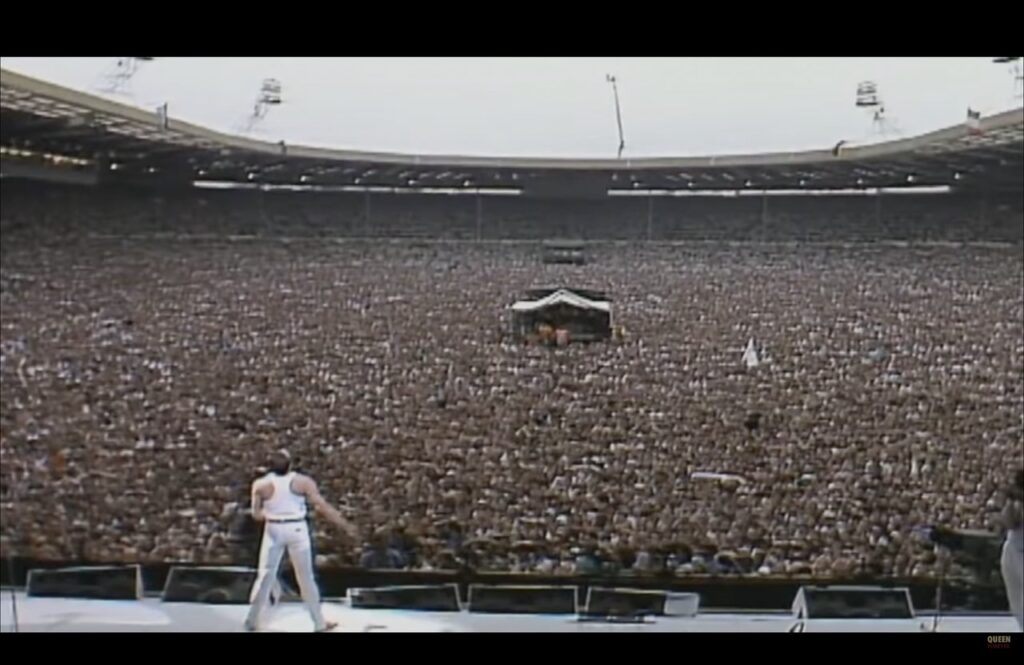
Live Aid is considered iconic for several reasons, and its significance extends beyond the world of music. Here are key factors that contributed to the iconic status of Live Aid:
- Global Reach: Live Aid was one of the first truly global charity events. The concert was broadcasted to a massive audience of over 1.9 billion people across 150 countries, making it one of the most-watched television events in history. This global reach allowed it to raise awareness on an unprecedented scale.
- Humanitarian Purpose: The primary goal of Live Aid was to raise funds for famine relief in Ethiopia. The event brought attention to a humanitarian crisis and demonstrated the power of music to mobilize people for a greater cause. The funds raised—over £125 million—contributed significantly to addressing the famine’s immediate effects.
- Star-Studded Lineup: Live Aid assembled an extraordinary lineup of some of the biggest and most influential artists of the time. Performers like Queen, U2, David Bowie, and others delivered memorable and often iconic performances, contributing to the overall impact of the event.
- Queen’s Performance: Queen’s performance at Wembley Stadium is often highlighted as one of the standout moments of Live Aid. Their set, particularly the interaction between Freddie Mercury and the audience during “Radio Ga Ga,” is considered one of the greatest live performances in rock history.
- Phil Collins’ Transatlantic Journey: Phil Collins’ unique feat of performing at both Wembley Stadium and JFK Stadium on the same day, using a Concorde jet for the transatlantic journey, added a dramatic and memorable element to the event.
- Media Coverage and Technology: Live Aid took place at a time when satellite technology allowed for simultaneous broadcasting across continents. The use of advanced technology for a charitable cause was a groundbreaking aspect of the event.
- Inspiration for Future Benefit Concerts: Live Aid set a precedent for large-scale benefit concerts. The success of Live Aid inspired subsequent events, such as Live 8 in 2005, organized by Bob Geldof and The Global Poverty Project.
- Legacy and Cultural Impact: Live Aid left a lasting impact on popular culture, symbolizing the ability of the music industry to contribute positively to global issues. The legacy of Live Aid continues to influence the way musicians engage in philanthropy and use their platform to address social and humanitarian concerns.
In summary, the combination of its global reach, humanitarian purpose, exceptional lineup, memorable performances, and the use of technology made Live Aid a groundbreaking and iconic event that transcended the boundaries of the music industry.
The most notable artists and bands that performed at Live Aid:
Wembley Stadium, London:
- David Bowie
- Freddie Mercury and Brian May (of Queen) with guests
- Paul McCartney
- George Michael (of Wham!)
- Dire Straits
- Led Zeppelin (with Phil Collins and Tony Thompson on drums)
- Sting and Phil Collins
- Eric Clapton
- Bryan Adams
- The Boomtown Rats
- Simple Minds
- Elvis Costello
- The Style Council
JFK Stadium, Philadelphia:
- The Beach Boys
- Tom Petty and the Heartbreakers
- The Four Tops
- Black Sabbath
- Rick Springfield
- REO Speedwagon
- Crosby, Stills, Nash & Young
- Judas Priest
- Bryan Adams (performed in both London and Philadelphia)
- Phil Collins (performed in both London and Philadelphia)
- Led Zeppelin (with Phil Collins and Tony Thompson on drums, performed in both London and Philadelphia)
Handcrafted and MindMade Privacy Policy & Terms of Use and Sitemap .
We will keep fighting for all libraries - stand with us!
Internet Archive Audio

- This Just In
- Grateful Dead
- Old Time Radio
- 78 RPMs and Cylinder Recordings
- Audio Books & Poetry
- Computers, Technology and Science
- Music, Arts & Culture
- News & Public Affairs
- Spirituality & Religion
- Radio News Archive

- Flickr Commons
- Occupy Wall Street Flickr
- NASA Images
- Solar System Collection
- Ames Research Center

- All Software
- Old School Emulation
- MS-DOS Games
- Historical Software
- Classic PC Games
- Software Library
- Kodi Archive and Support File
- Vintage Software
- CD-ROM Software
- CD-ROM Software Library
- Software Sites
- Tucows Software Library
- Shareware CD-ROMs
- Software Capsules Compilation
- CD-ROM Images
- ZX Spectrum
- DOOM Level CD

- Smithsonian Libraries
- FEDLINK (US)
- Lincoln Collection
- American Libraries
- Canadian Libraries
- Universal Library
- Project Gutenberg
- Children's Library
- Biodiversity Heritage Library
- Books by Language
- Additional Collections

- Prelinger Archives
- Democracy Now!
- Occupy Wall Street
- TV NSA Clip Library
- Animation & Cartoons
- Arts & Music
- Computers & Technology
- Cultural & Academic Films
- Ephemeral Films
- Sports Videos
- Videogame Videos
- Youth Media
Search the history of over 866 billion web pages on the Internet.
Mobile Apps
- Wayback Machine (iOS)
- Wayback Machine (Android)
Browser Extensions
Archive-it subscription.
- Explore the Collections
- Build Collections
Save Page Now
Capture a web page as it appears now for use as a trusted citation in the future.
Please enter a valid web address
- Donate Donate icon An illustration of a heart shape
Live Aid 1985 full BBC Broadcast
Video item preview, share or embed this item, flag this item for.
- Graphic Violence
- Explicit Sexual Content
- Hate Speech
- Misinformation/Disinformation
- Marketing/Phishing/Advertising
- Misleading/Inaccurate/Missing Metadata
plus-circle Add Review comment Reviews
14,032 Views
101 Favorites
DOWNLOAD OPTIONS
In collections.
Uploaded by Freaky2003 on June 19, 2020
SIMILAR ITEMS (based on metadata)
- Cast & crew
- User reviews

The broadcast of the biggest benefit concert in history, organized by Bob Geldof and Midge Ure to raise funds for Ethiopian famine relief. The broadcast of the biggest benefit concert in history, organized by Bob Geldof and Midge Ure to raise funds for Ethiopian famine relief. The broadcast of the biggest benefit concert in history, organized by Bob Geldof and Midge Ure to raise funds for Ethiopian famine relief.
- Vincent Scarza
- Kenneth Shapiro
- Bryan Adams
- Stuart Adamson
- 21 User reviews
- 3 Critic reviews
- 1 win & 3 nominations

- Self (at JFK Stadium)
- (as Big Country)
- Self - Photographer

- (as Thompson Twins)

- (as Status Quo)

- Self - Host
- (as Boomtown Rats)

- (as Simple Minds)
- Kenneth Shapiro (national syndication)
- All cast & crew
- Production, box office & more at IMDbPro
More like this

Did you know
- Trivia During The Who 's set, a red warning light at the front of the stage flashed to alert the band that their time was up. In response, Pete Townshend stepped on the warning light, broke it, and the band played for five extra minutes.
Bob Geldof : [to the audience and world] Please. Please. Please. Give us as much money as we know you have. Thanks.
- Alternate versions In its original form, the concert ran 16 hours. There were two versions of the U.S. telecast - one incarnation aired complete on MTV, another produced by ABC was in two parts, part one (the first eleven hours) airing in syndication, part two (the final three hours) airing on ABC. In any case, the DVD version is edited to ten hours, leaving out many key performances, such as Crosby, Stills, Nash and Young, Power Station, The Hooters, The Four Tops, Rick Springfield, Bernard Watson, Santana, and Led Zeppelin. The DVD version also contains an aurally altered version of Paul McCartney's performance of "Let It Be" (due to a microphone problem in the first half of the song, McCartney had to re-record his vocals twenty years after the fact so that it could be included on the DVD).
- Connections Featured in American Bandstand's 33 1/3 Celebration (1985)
- Soundtracks I don't like Mondays Written by Bob Geldof Performed by The Boomtown Rats
Technical specs
- Runtime 16 hours
Related news
Contribute to this page.

- See more gaps
- Learn more about contributing
More to explore

Recently viewed
U2’s ‘Bad’ Break: 12 Minutes at Live Aid That Made the Band’s Career
By Gavin Edwards
Gavin Edwards
U2 formed in Dublin as teenagers in 1976. Between 1980 and 1985, they released four albums ( Boy , October , War and The Unforgettable Fire ).
On July 13th, 1985, seemingly every major rock act on Earth played the Live Aid concert for African famine relief, hosted primarily in Philadelphia’s JFK Stadium and London’s Wembley Stadium and broadcast to over a billion people worldwide. Backstage at Wembley, U2 met some of their heroes, including Pete Townshend, David Bowie, Paul McCartney, and Muhammad Ali. Freddie Mercury flirted with Bono , who was previously unaware that the Queen singer was gay.
20 Insanely Great U2 Songs Only Hardcore Fans Know
U2 hit the stage in London at 5:20 p.m. Greenwich Mean Time (12:20 p.m. on the East Coast of the States); they had a 20-minute slot between Bryan Adams and the Beach Boys (both performing in Philly). After being introduced by Jack Nicholson (“a group that’s never had any problem saying how they feel”), U2 kicked off their set, which they intended to be three songs long, with “Sunday Bloody Sunday.”
0:00 Bono introduces U2’s second song, while we see aerial footage of tens of thousands of fans at Wembley. (Hey, England has the Goodyear blimp too!) “We’re an Irish band,” Bono says by way of introduction. “We come from Dublin City, Ireland.” (Circa 1985, the two facts casual fans knew about U2 were that they were Irish and Christian.) “Like all cities, it has its good and it has its bad,” Bono continues. “This is a song called ‘Bad.'” A bit of a forced transition, but hey, the clock is ticking.
0:20 Bono is wearing a puffy white shirt and a black, vaguely military, jacket, accessorized with a bolo tie and a crucifix dangling in front of his throat. He’s in black leather pants. The most striking thing about his appearance is the resplendent mullet, complete with blond highlights, gloriously crowning his head. On a day with many spectacular hairstyles, Bono’s is far from the best, but it may be the most memorable.
0:23 Bassist Adam Clayton , standing behind Bono, is in head-to-foot gray. He’s removed the sunglasses he wore during “Sunday Bloody Sunday.” He looks scruffy and dazed, as if he just rolled out of bed on a submarine.
Editor’s picks
The 250 greatest guitarists of all time, the 500 greatest albums of all time, the 50 worst decisions in movie history, every awful thing trump has promised to do in a second term.
0:25 We get a wide shot of the crowd, which has lots of banners reading “U2” – some of which were visible during the sets of earlier bands. U2 has clearly won the hearts and minds of the crucial British flag-waving demographic. At this point, U2 was scratching on the door of the U.S.A. – their sole Top 40 single, “Pride (In the Name of Love),” topped out at Number 33 – but in the U.K. they had scored three Top 10 singles and two chart-topping albums. U2 managed to book a Live Aid slot that would maximize their American exposure – they supported the cause of ending African famine, but they also knew the broadcast had the potential to break them to a much larger audience. The night before the show, however, U2’s management called Live Aid organizer Bob Geldof at 2 a.m. and threatened to pull them out unless they got a soundcheck. Geldof responded “Fuck ’em,” and the band played as planned.

0:37 Some backing synth-like sounds have been playing gently, but now we get the actual opening of the song, a lick that insinuates itself and keeps looping back on itself, like the ouroboros serpent swallowing its own tail. The Edge wrote variations on this guitar theme for a long time; “Bad” is probably the best, but two years later, “I Still Haven’t Found What I’m Looking For” would become the most successful version.
0:40 A wide-screen view of U2. Clayton towels himself off and drinks some water, waiting for his cue. The Edge wanders out of frame. Drummer Larry Mullen Jr. consults with a roadie and audibly bangs his sticks together. Cameramen dressed in white try not to get in the way.
0:56 Bono starts singing: “Bum-bum-ba-bum-bum/Satellite of love,” he croons, quoting Lou Reed’s 1972 song “Satellite of Love.” In 1985, it felt like a big deal that a concert could be happening simultaneously in two locations: separated by an ocean, linked by a satellite in the sky. It was real-life science fiction, impressive and a little scary. Very few people imagined that twenty-nine years later, those telecommunications satellites would offer up U2’s performance to you, almost anywhere, on demand via a telephone you kept in your pocket.
1:22 Extreme closeup on Bono, letting us inspect his nose hair and the quality of his shave that morning. “If you twist and turn away,” he sings, beginning his own lyrics. On The Unforgettable Fire , produced by Brian Eno, “Bad” was a muddy album track buried on side two. “That is potentially a truly great song… if I had finished it,” Bono said. “It was very difficult to do, almost an impossible collision of cultures for us. It was a different kind of songwriting, like Philip Glass meets Astral Weeks, Van Morrison crossed with German electronica. You have sequences which are rigid and metronomic and then you have a bass which is improvising all the way, and the voice too. We were struggling so hard to find that song.” While the studio version of “Bad” was inert, on tour U2 played it obsessively in soundcheck, until the song came to life.
1:54 As the drums and bass kick in, we get a side view of the stage, with the Edge in the foreground. His white shirt is untucked; at age 23, his hairline is receding faster than the evening tide. This is one of the last times he will leave the house without a hat.
Related Stories
U2 play 'one' with daniel lanois and break out fan favorite '40' at final sphere concert, bono pays tribute to alexei navalny during u2’s sphere residency.
2:46 A view of the crowd reveals that “Bad” appears not to be sending its members into a frenzy. (In fairness, they were in the middle of their sixth hour of music: “pace yourself” is the number two rule at any rock festival, behind only “drink lots of water.”) Visible at the front of the stage: a small cordoned area of about twenty photographers, taking still pictures. Mullen Jr. settles into a martial groove.
“If I could free myself/I’d set your spirit free,” Bono sings with his eyes closed, blocking out the 72,000 people in front of him, and the billion or so people watching around the world.
3:15 Rear view. Clayton is grooving to the song, while Bono is, no lie, dancing! Yes, the bottom half of his body is clearly moving in a rhythmic fashion. Bono continues to cling to the microphone, lest his newfound case of happy feet lead him to do something unwise, like jump off the stage. “Whoo-hoo!” he sings, “Whoo-hoo-hoo.” At that moment, his vowels provide more emotional release than actual words could.
3:43 “So let it go/and so fade away,” Bono belts, as the camera zooms in on his right profile and the band brings the simmering music to a boil. The lyrics of “Bad” don’t translate well to line-by-line analysis – they’re about the scourge of heroin, but you probably wouldn’t know that if the band hadn’t told you. They are, however, extremely evocative, summoning up longing and defiance. And with this “fade away” line, Bono taps into decades of rock history, encompassing “Not Fade Away” by Buddy Holly, the Stones’ cover of that song, Bruce Springsteen’s single “Fade Away,” and Neil Young’s refrain in “Hey Hey, My My (Into the Black)” that it’s better to burn out than to fade away. Bono has zeroed in on the same junkie yearning that made Kurt Cobain quote Neil Young’s lyric in his suicide note nine years later.

4:00 “Wide awake! I’m wide awake!” Bono belts, sweat on his brow. Then a syllogism: “I’m not sleeping.” The lyric was intended as a refutation of the heroin lifestyle: staying awake rather than nodding off in a narcotic haze. But against the backdrop of a concert about suffering in Africa, it plays as a song about striving to do good in the world, rather than regarding your own navel.
4:12 A cameraman finds that rock-show staple: a girl in a tanktop sitting on somebody’s shoulders. Meanwhile, Bono detaches his microphone from the stand and strides to the front of the stage, where he kneels down; you can see a large clock behind him, in the wings on the right side of the stage. The time in London is 5:30 p.m.
A roadie with curly hair untangles Bono’s microphone cord with intense focus. This is Greg Carroll, a Maori man from New Zealand; in the year leading up to Live Aid, he had become the band’s assistant and one of Bono’s best friends. Almost exactly one year after this performance, Carroll would die in a motorcycle accident in Dublin; a shattered Bono wrote the song “One Tree Hill” about him.
4:32 Bono hits a total clam: “Maybe they’d tell me what I should say,” he sings, squeaking “they’d” like a teenager hitting puberty, driving by his intended note like he’s doing 60 mph past a take-out window.
5:17 Bono tentatively puts a high-heeled boot – his right one – on the monitors in front of the stage, and then leans forward, trying to get closer to the audience, which makes him look like the figurehead on a ship, maybe the S.S. FEED THE WORLD. Bono then enters the valley of the “tion” rhymes: “desperation/separation/condemnation/revelation/in temptation/isolation/desolation/isolation.” This is, frankly, a lousy rhyme scheme, but somehow he pulls it off. It’s no worse a lyric than “your eyes make a circle” on “I Will Follow” – two eyes, by definition, make a line.
6:04 Bono channels David Byrne for a brief sideways dance, halfway between the Watusi and an epileptic seizure.
6:09 Bono drops the microphone with a loud clunk. He roams the stage, trying to exhort the crowd, feeling that something in the band’s performance is lacking. Searching for it, he jumps down onto the stage’s apron: a narrow platform in front of the main stage and its monitors, about two feet lower. He runs the length of the apron, towards something on stage right: disappointingly, it’s a cadre of photographers.
6:32 “I don’t like the distance between stage and crowd,” Bono said later. “I don’t like the distance between performer and audience. So I’m looking for a symbol of the day, something I can hold onto.” He tries a trick he’s done at shows before: pulling a girl from the audience, the same way Bruce Springsteen would find a live dance partner for “Dancing in the Dark.” Bono makes eye contact with a girl in the front row and gestures with both hands: come here.
That girl is a young Brit, Melanie Hills. “Bono looked at the audience and suddenly looked towards me,” she remembered. “I was looking around: me? me? And they were saying, yeah, you, you, get up there. Oh my God. And so the security men grabbed me, but they wouldn’t pull me directly onstage. They took me around. So I think he thought that I’d just fainted because I was so overcome by what was going on.”
6:50 Melanie Hills is extracted from the scrum by security guards in bright yellow vests. (Years later, Bono would suggest that he was trying to help fans who were getting crushed, but his primary motive seems to have been finding a moment that would elevate U2’s set beyond the mundane.) Bono keeps gesturing broadly, like he’s playing charades with a slow-on-the-uptake partner. He’s now pointing at the girl who was standing next to Melanie: her sister, Elaine Hills. Apparently, he’s hoping that security will hoist her up onto the apron with him, but they’re not doing it.
“I was making sure the eye contact was definitely happening,” said Elaine, who wanted to make sure that Bono wasn’t actually summoning another girl in her general vicinity. Security extracts her from the front row. “I was whisked off,” she said, “and I didn’t know where I was being whisked to.”
7:17 Bono, frustrated that the girls are not being lifted up to him onstage, vaults off the apron and onto the muddy ground roughly ten feet below, out of view of the band and most of the crowd at Wembley, but not the television cameras. (Years later, Mullen joked with Bono, “I don’t think you realized that once you climbed down, it was like a two-mile walk to get to the punters.”) Bono gestures to a third girl in the crowd and security pulls her out. There are 72,000 fans in attendance at Wembley Stadium; if Bono keeps up this pace, pulling fans over the security barriers one by one, he can get the entire crowd over the barricades in just 12 and a half days.

The third girl is 15-year-old Kal Khalique. She is not in the front row because she wants to be close to Bono. “My sister and I were desperate to see Wham!, so we had made it down to the front of the stage,” she explained. (George Michael and Andrew Ridgeley made a guest appearance during Elton John’s set three and a half hours later.) That’s right: Bono has selected a fan whose tastes run less along the lines of “New Year’s Day” and more to “Wake Me Up Before You Go-Go.”
7:40 Khalique is pulled out of the crowd and Bono wraps her up in his arms. They stagger back a few steps, and then start slow-dancing, her head buried in Bono’s shoulder. Khalique looks happy but overwhelmed. It’s taken a lot of effort, but Bono has found the dramatic moment he’s been striving for, breaking down the barrier between the bands and the fans. “I didn’t know that when I was holding on to her I’d be holding on to the rest of the world,” Bono said later. He kisses Khalique’s hand, and then kisses her on the cheek. Their whole encounter lasts about 20 seconds – she walks away with her hand on her forehead, apparently in a state of shock, while Bono sprints off through the mud and the crushed soda bottles.
8:10 Cut to the stage: It has been two solid minutes since we saw the Edge, Clayton or Mullen, when Bono dropped the microphone and left them to play on. Even more relevant to the other three members of the band: when Bono jumped off the edge of the stage, they lost visual contact, like he was an Apollo capsule on the dark side of the moon. Two minutes can be an eternity in front of a live crowd, let alone a global TV audience.
During that time, the three musicians have been heroically vamping, with Clayton throwing in minor but compelling variations on his bassline. “How long can we do this for?” Mullen said he thought to himself. “It was kind of excruciating. We didn’t know whether we should stop, we didn’t know where he was, we didn’t know if he had fallen.”
As the Edge remembered it, “Bono’s dive into the crowd went a bit wrong because he had so much stuff to climb over to get to the front row. It was a massive stadium show with multiple barriers and camera tracks and a level difference between the stage and the floor that must have been twenty feet. We lost sight of him completely. He was gone for so long I started to think maybe he had decided to end the set early and was on his way to the dressing room. I was totally thrown, and I’m looking at Adam and Larry to see if they know what’s going on and they’re looking back at me with complete panic across their faces.” He concluded, “I’m just glad the cameras didn’t show the rest of the band during the whole drama, because we must have looked like the Three Stooges up there.”
Just as the band is about to stop playing, Bono clambers up a ladder, through a group of photographers and back onto the apron, in clear view again.
Bono later admitted, “I’d gone AWOL to try and find a television moment and forgot about the song.”
8:18 Melanie and Elaine Hills are standing on the apron, waiting for Bono. He embraces Melanie and twirls her around, and then pulls Elaine in to join the hug, giving her a kiss on the forehead. “It was a really big wet kiss,” Elaine said. “And he had all this stubble and sweat and I thought, whoo.”
Bono wheels around, his right arm outstretched, looking for a microphone, knowing that Greg Carroll will bring one to him. In his field of vision on stage right is the clock: it’s now 5:34 in London. Carroll detaches the microphone from its stand and jumps onto the apron, handing it to Bono.
8:36 “Kick it off!” Bono shouts, audible once more. As Elaine Hills climbs off the apron to rejoin the crowd, Bono walks over and plants another kiss on her. Mullen goes into a dramatic fill, relieved to have a break from the drum pattern he’s been playing over and over. “Here we go!” Bono yells. He knows that his venture into the crowd has taken all the time allotted for the band to play their third song, “Pride (In the Name of Love)” – this will be U2’s final song of the day. So when he launches back into “Bad,” he gives it everything he has: “Let it go! Go! Go! Go! Let it go!”
9:43 After an electrifying chorus, the band returns to the same lick they’ve been vamping on. Bono sings “I’m not sleeping,” and starts quoting other rock songs: first the Rolling Stones’ “Ruby Tuesday,” which he turns into a singalong. Then the Stones’ “Sympathy for the Devil,” throwing his body into a doubled-over spasm on each line, before seguing into Lou Reed’s “Take a Walk on the Wild Side.” Tens of thousands of people sing “Doo doo doo, doo-doo-doo-doo,” and Bono raps a modified version of the lyrics: “Holly came from Miami, F-L-A/Hitchhiked all the way across the U.S.A./She could hear the satellite coming down/Pretty soon she was in London town: Wembley Stadium.”
Bono has often enhanced “Bad” with snatches of other songs – the final score at Live Aid was two by the Stones, two by Lou Reed. Sometimes included in this era, but not on this day: the Beatles’ “Norwegian Wood (This Bird Has Flown)” and Elton John’s “Candle in the Wind.”
11:30 “Thank you,” Bono tells the crowd. “God bless you.” He drops the microphone like he’s just won a rap battle, clambers back onto the main stage, and walks past his bandmates while they play that riff yet again. On his way out, Bono grabs a white towel and waves to the crowd, who are now ecstatic.
11:56 The video ends with a brief shot of a helicopter: footage of Phil Collins making his journey from Wembley to Philadelphia via the Concorde. Also on the Concorde: Cher, who apparently had no idea Live Aid was happening. “She asked what was going on,” Collins said. “I told her about Live Aid and she asked whether I could get her on. I told her just to turn up.”
After this video: U2 had a huge argument backstage. Mullen, Clayton, and the Edge were unhappy with Bono’s venture into the crowd, which hung them out to dry and denied the band a chance to play their biggest hit, “Pride (In the Name of Love).” The consensus among the four band members was that their performance had been clumsy and earthbound. “We felt like we’d blown an opportunity to be great,” Mullen said.
“It was a great day, but I thought I had fucked it up,” Bono said. He flew home to Ireland with his wife Ali, visiting her parents in Wexford, brooding about what felt like a massive failure. Over the following week, however, the band discovered that their performance was considered by most observers to be the day’s high point (alongside Queen’s triumphant set ). Far from being a blown opportunity, it was a career-making moment that returned all their albums to the U.K. charts, established them in the U.S.A., and transformed them into worldwide stars. The band begrudgingly had to admit that Bono’s instinct as a performer trumped their sensible show-biz plans.
The Edge said, “It really took us by surprise when people started talking about U2 as one of the noteworthy performances of the day. I thought they were joking, I really thought we were crap. But looking back, as I did a week later, I started to see what it was. It was the sense of real, total jeopardy, which is always very exciting for a live event, and Bono’s complete determination to make physical contact with the crowd and eventually getting there after two minutes of struggling over barriers. I think there was something about the effort he had to put in to do it that somehow made it even more powerful.”
Considering Live Aid years later, Bono summed up U2’s set: “Crap sound, crap haircuts, and we didn’t end up playing the hit ‘Pride (In the Name of Love)’ because the singer fucked off into the crowd – band wanted to fire me as a result – and it turned out to be one of the best days of our life. Explain that. Ask God, he probably knows.”
Research assistance: Lauren Paylor, Killian Young, and Erin Kelly
Christine and the Queens Unveils Evocative Single 'Rentrer Chez Moi'
- By Emily Zemler
Zendaya Says She Would Consider Releasing New Music: 'Maybe One Day'
- Coming Soon?
Eminem Announces New LP 'The Death of Slim Shady (Coup de Grace)'
- Murder He Wrote
Normani Unleashes First ‘Dopamine’ Single ‘1:59’ Featuring Gunna
- By Charisma Madarang
Elle King Cuts Loose on Her 'Baby Daddy's Weekend' in New Song
- 'Raise a Cup'
- By Kory Grow
Most Popular
Anne hathaway says 'gross' chemistry test in the 2000s required her to make out with 10 guys: that's the 'worst way to do it' and 'now we know better', 'the lord of the rings' trilogy returning to theaters, remastered and extended, first queen elizabeth ii memorial statue unveiled, with a smile and three corgis, in england, sources claim hugh jackman’s worrying behavior may have something to do with his breakup, you might also like, kerry condon on channeling ‘trainspotting’ for ira thriller ‘in the land of saints and sinners’ and upcoming ‘star wars: skeleton crew’: ‘it’s really adventurous’, l catterton acquires majority stake in kiko milano, the best yoga mats for any practice, according to instructors, andrew ahn to direct ‘reimagining’ of ‘the wedding banquet’ starring lily gladstone and bowen yang, dumb luck: nba dodges bullet as jontay porter fouls out.
Rolling Stone is a part of Penske Media Corporation. © 2024 Rolling Stone, LLC. All rights reserved.
Verify it's you
Please log in.

IMAGES
VIDEO
COMMENTS
Live Aid was a multi-venue benefit concert held on Saturday 13 July 1985, as well as a music-based fundraising initiative. The original event was organised by Bob Geldof and Midge Ure to raise further funds for relief of the 1983-1985 famine in Ethiopia, a movement that started with the release of the successful charity single "Do They Know It's Christmas?" in December 1984.
Watch the full concert of Live Aid, the historic global event that raised funds for famine relief in Ethiopia, featuring legendary performances by Queen, U2, Madonna and more.
George Harrison and Ringo Starr (and Julian Lennon) Ringo Starr and George Harrison. Picture: Alamy. Paul McCartney's set was a major highlight, but George Harrison (whose Concert for Bangla Desh surely set the template for Live Aid) and Ringo Starr weren't there. Word is they were worried about being tricked into a " Beatles reunion", either ...
Michael Ray. Live Aid was a benefit concert held simultaneously at Wembley Stadium in London and JFK Stadium in Philadelphia on July 13, 1985. Organized by Boomtown Rats front man Bob Geldof and Ultravox vocalist Midge Ure, it drew an estimated 1.5 billion television viewers and raised millions of dollars for famine relief in Ethiopia.
On July 13, 1985, at Wembley Stadium in London, Prince Charles and Princess Diana officially open Live Aid, a worldwide rock concert organized to raise money for the relief of famine-stricken ...
August 16, 1985. Front cover of the program from the Live Aid concert at JFK Stadium in Philadelphia, Pennsylvania on July 13th, 1985. Blank Archives/Getty. I t was superstar heaven. Keith ...
With a lineup featuring more than 75 artists, including Elton John, Madonna, Carlos Santana, David Bowie, U2, and Eric Clapton, Live Aid 1985 was a show that stayed in our hearts, featuring the legendary frontman of Queen, Freddie Mercury, along with Brian May, John Deacon and Roger Taylor for a…
Live Aid, which took place on July 13, 1985 for a global audience of 1.9 billion people, was a massive, bicontinental pop concert created to raise money for Ethiopian famine relief.
Live Aid, the historic benefit concert held on Saturday 13 July 1985, stands as a testament to the power of music and human compassion. Organized by Bob Geldof and Midge Ure, Live Aid aimed to raise famine relief funds for Ethiopia in response to the devastating 1983-1985 famine. The event was a monumental music-based initiative that had a ...
Live Aid. Jul 13, 1985 (39 years ago) John F. Kennedy Stadium Philadelphia, Pennsylvania, United States. Scroll to: Scroll to: Top; Bands; Details; Details; Genres; Setlists; Videos; ... Buy tickets to Live Aid: Choose the vendor you'd like to view: Need a place to stay? Find nearby lodging .
There were definitely lesser bands than Journey to play Live Aid. MikeVielhaber, Apr 10, 2016 #5. Binni, steeler1979, DiabloG and 19 others ... Schon and Cain that Vallory and Smith should be let go during the recording of Raised On Radio in the fall of 1985. So, it is not surprising that Journey would have declined an invitation to perform at ...
Special video clip chronicling REO Speedwagon's trip to perform at Live Aid.I do NOT own ANY of this material.No copyright infringement intended.
Queen - Radio Gaga at Live Aid 1985. It was Geldof who best summed up the mood of Live Aid 1985 and Queenʼs impact on it. "Queen were absolutely the best band of the day," he remembered. "They played the best, had the best sound, used their time to the full. They understood the idea exactly, that it was a global jukebox.
Live Aid - 1985. Live Aid was a historic, global music event that took place on July 13, 1985. Organized by Bob Geldof and Midge Ure, the purpose of Live Aid was to raise funds for famine relief in Ethiopia, where a severe famine was causing widespread suffering and death. ... Phil Collins' Transatlantic Journey: Phil Collins' unique feat ...
L ive Aid was a dual-venue benefit concert held on Saturday 13 July 1985, as well as an ongoing music-based fundraising initiative. The event was organised by Sir Bob Geldof and Midge Ure to raise funds for the Ethiopian famine disaster. There where about 72,000 people in Wembley Stadium, London and about 100,000 in JFK.
In early 1985 Journey started writing and recording what was to be an album called "Freedom" and it was supposed to be released in the Spring on 85. I would love to know the timeline when Valory and Smith were fired, because Smith still appears on 3 songs that would become Raised on Radio, released in 86.
8/16/1966 - The Beatles. The stadium suffered from numerous structural problems, with reports of falling concrete. It was demolished on September 23, 1992. John F. Kennedy Stadium. S. Broad Street. Philadelphia PA 19148. On July 13, 1985, the American venue of Live Aid was held here to raise funds for relief of the ongoing Ethiopian famine.
If anyone has located any articles or references from 1985 regarding Journey's non-appearance at Live Aid, by all means please share them. When the issue of Jouney's non appearance at Live Aid is settled, maybe we can debate why such other luminaries as Kenny Rogers, Kenny G, G Gordon Liddy or Gordon Lightfoot were also non-participants at the ...
Live Aid: Directed by Vincent Scarza, Kenneth Shapiro. With Bob Geldof, Bryan Adams, Stuart Adamson, Mo Amin. The broadcast of the biggest benefit concert in history, organized by Bob Geldof and Midge Ure to raise funds for Ethiopian famine relief.
Queen performing at Live Aid in front of 72,000 people in Wembley Stadium, London on the 13th July, 1985. The event was organised by Sir Bob Geldof and Midge...
On July 13th, 1985, seemingly every major rock act on Earth played the Live Aid concert for African famine relief, hosted primarily in Philadelphia's JFK Stadium and London's Wembley Stadium ...
Simple Minds performing at Live Aid in front of 100,000 people in the John F. Kennedy Stadium, Philadelphia USA on the 13th July, 1985. The event was organis...
Live AID Jul 13, 1985 Philadelphia, Pennsylvania, United States Uploaded by Lori K. Bryan Adams / Fiona Jun 27, 1985 Worcester, ... it become a global hit after being launched as a single in June 1985. The song was inspired by Journey's "Faithfully" and was written when Adams was on the Frontier's Tour with the band in 1983.